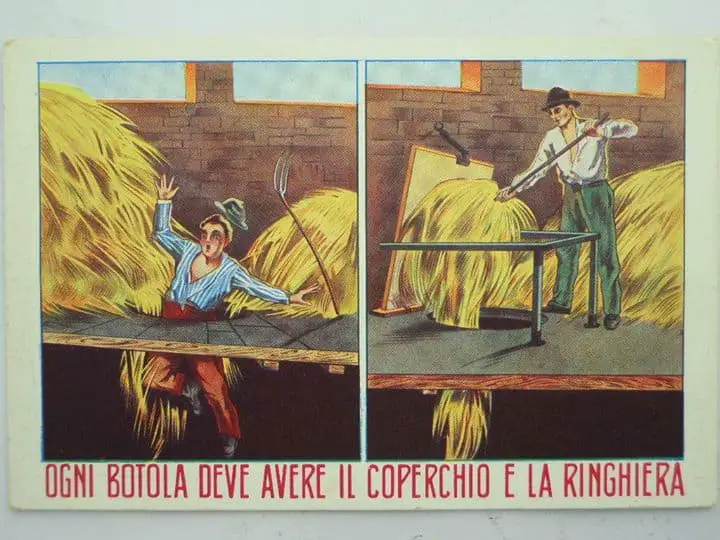Haystacks and haybales are multivalent symbols in storytelling, utilised in horror as well as in cosy pastoral stories.
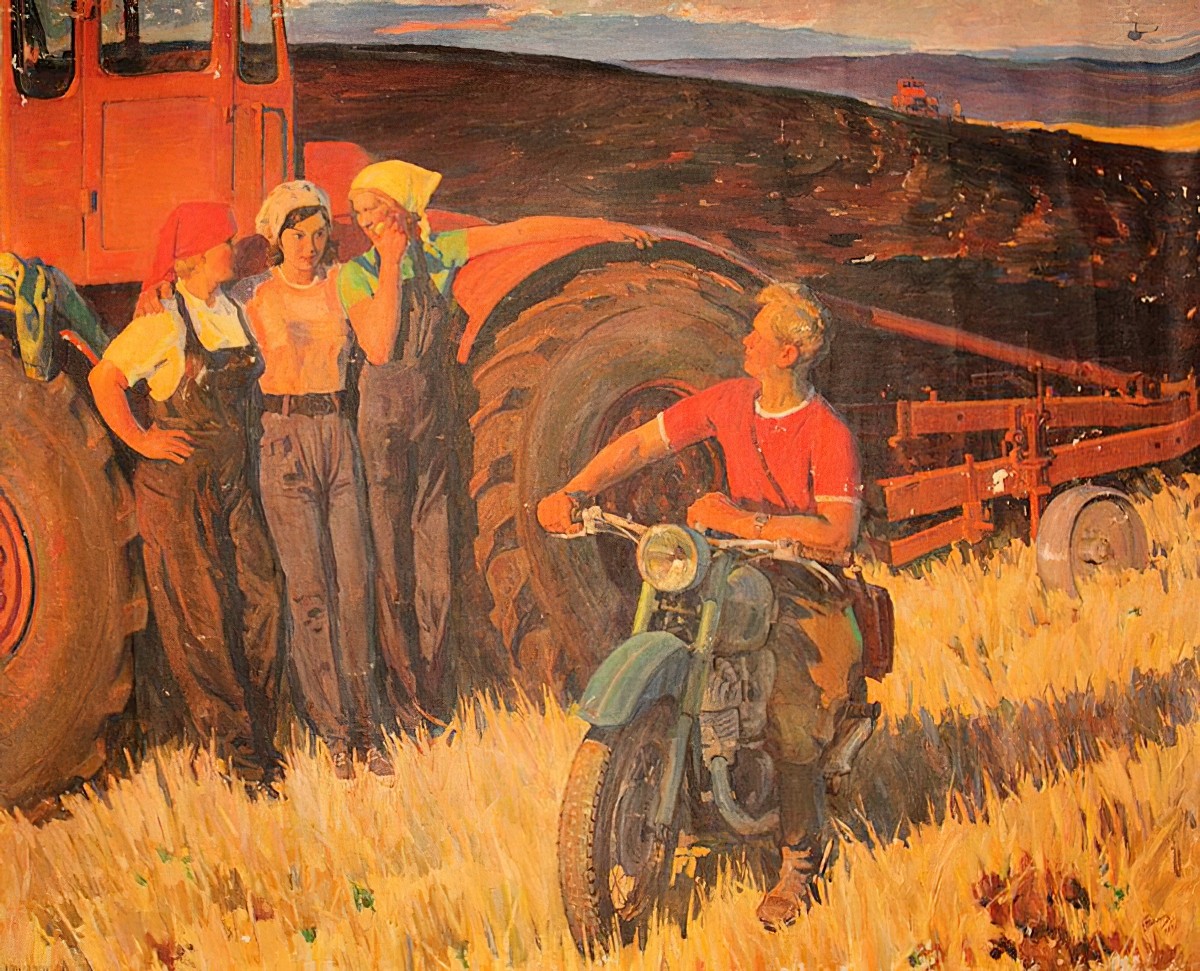
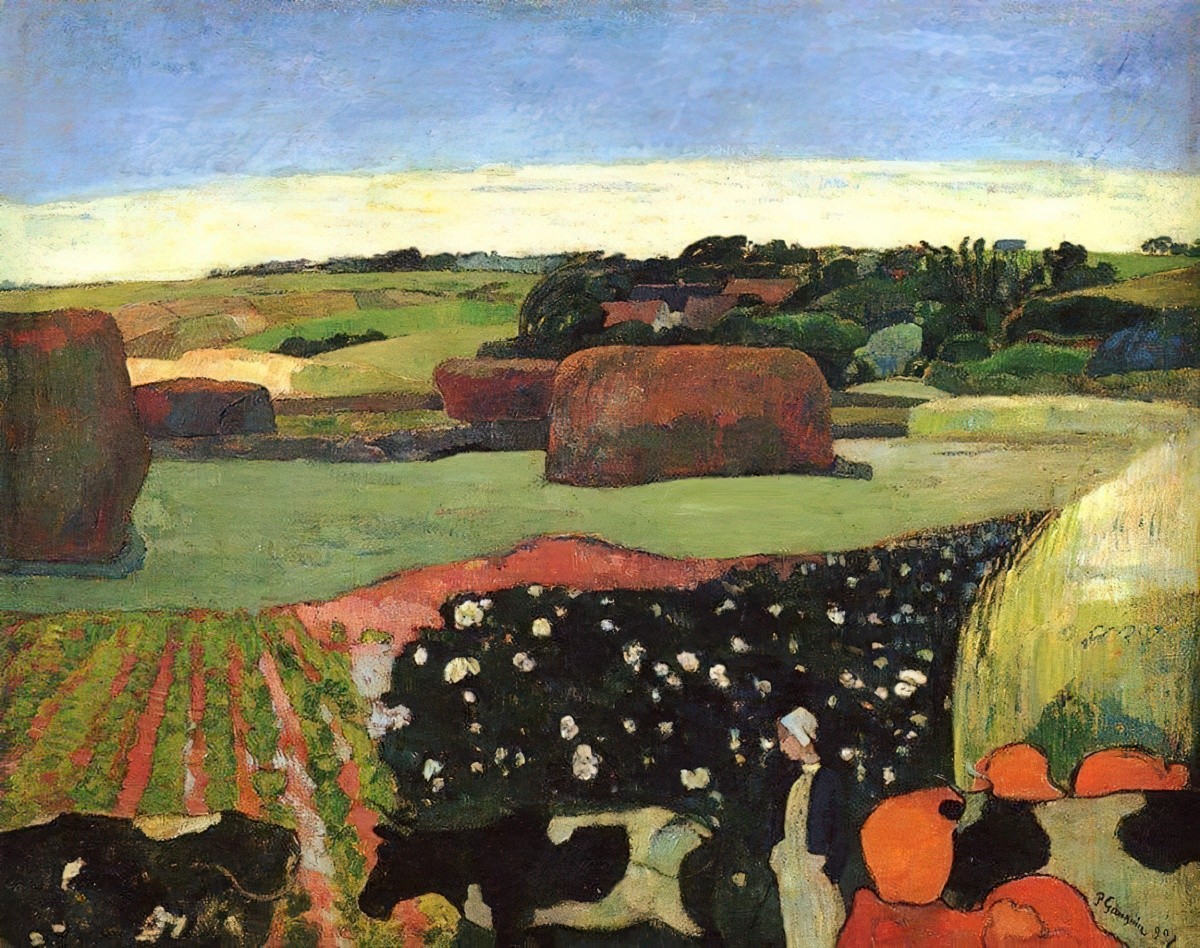
HAY SYMBOLISM AND HISTORY
So why a scary story about haybales for the modern era? How many people have anything to do with haybales in this day and age? Sure, farmers do. But not many of us live in rural areas anymore.
It may be difficult for urban dwellers to understand the importance of haybales, and their prominence on the landscape. In earlier times especially, and also today, haybales are the difference between life and death for livestock farmers. Last year’s Australian drought rammed that one home to us all.
Rituals from antiquity remind us of the importance of haybales. You’ll have heard of Christmas, but what about Loaf-mass?
Lammas is ‘hlaf-maesse’ (loaf-mass) in Old English. The word is used in the 9th century Anglo Saxon Chronicle. On the first of August, bread made from the first harvest was blessed in church. This bread was considered magic, and used to protect new grain. The painting below by Eric Ravillious (1934) shows the shape of those old ‘loaf’ shaped haybales.
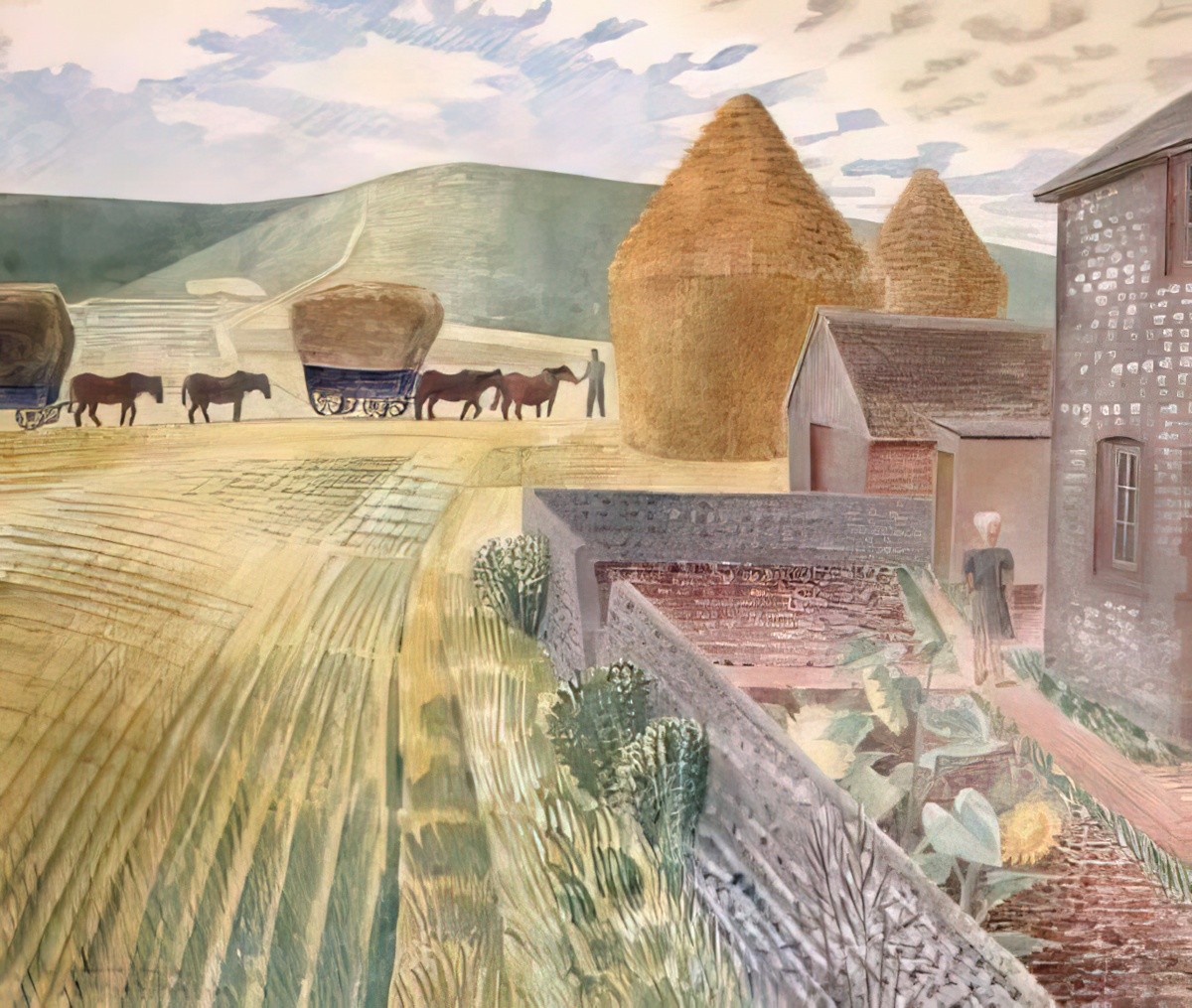
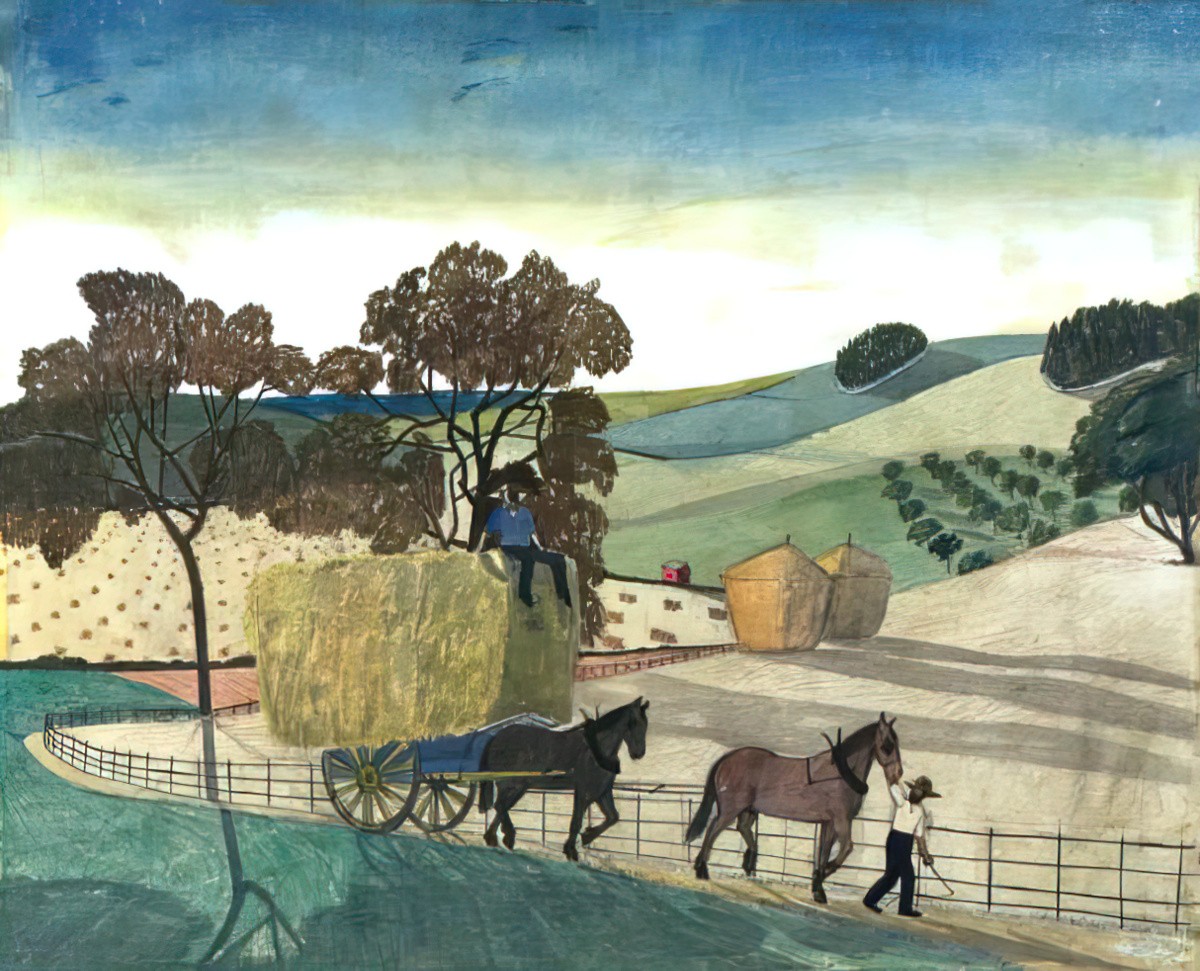
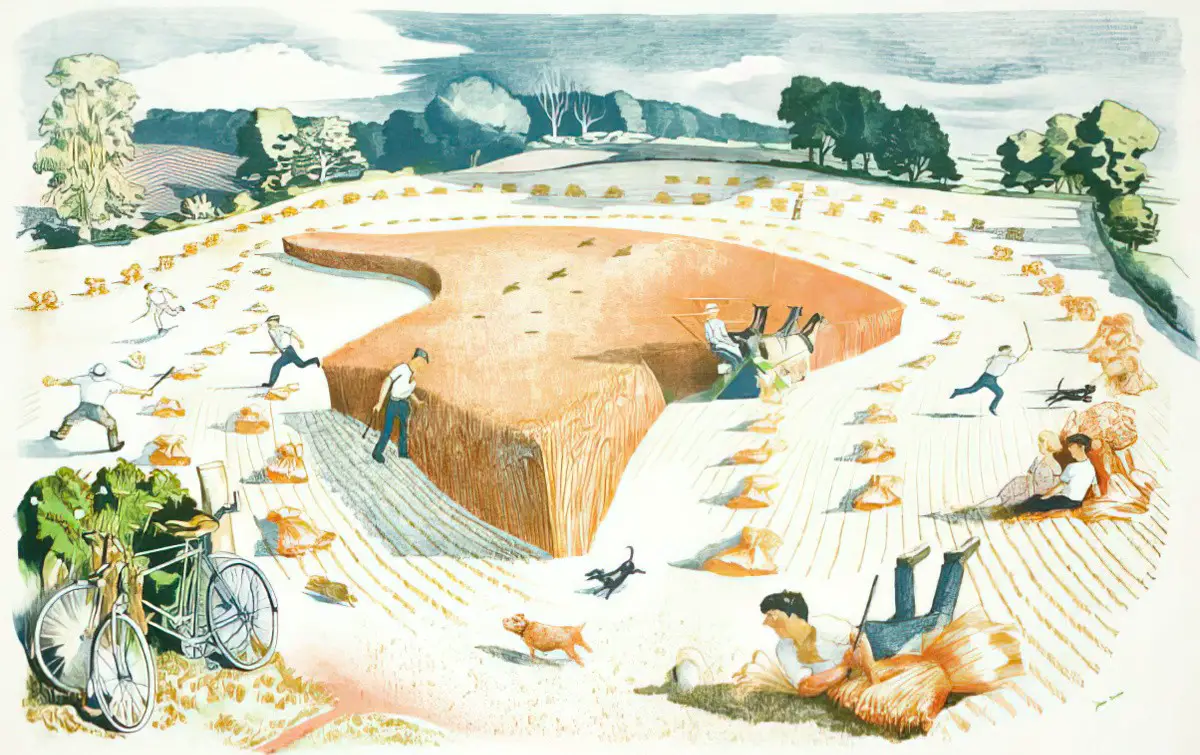
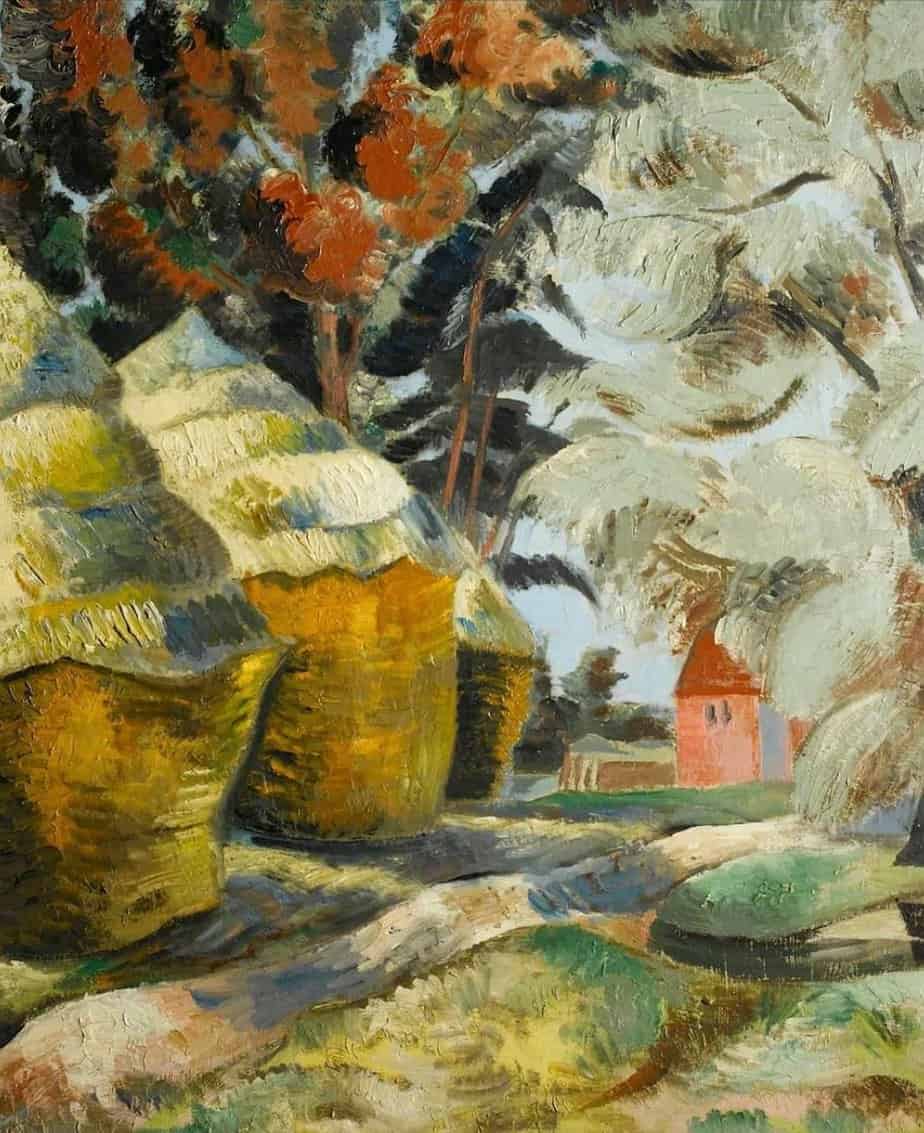
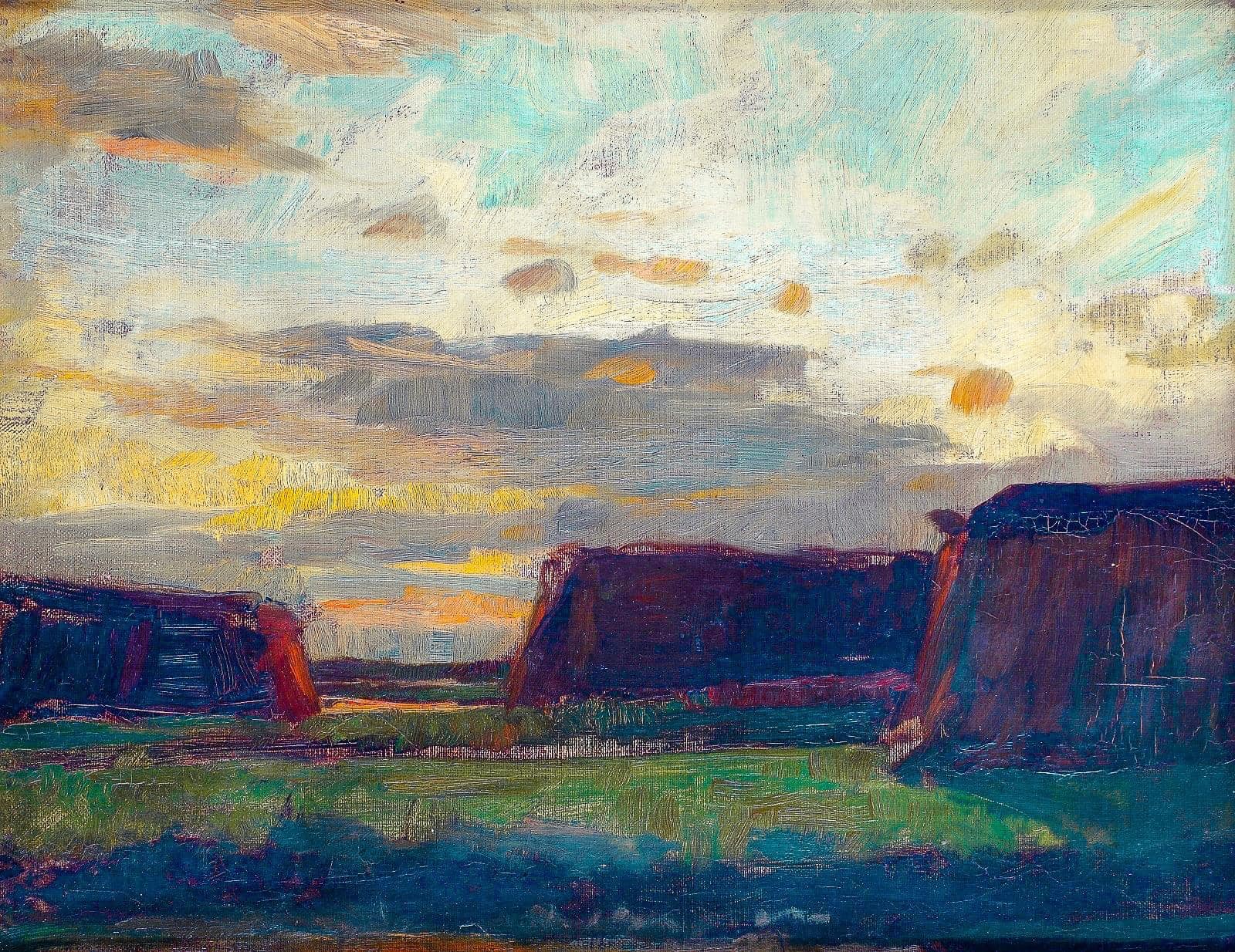
Hay, in storytelling, is one of those multivalent symbols. Idioms such as ‘Make hay while the sun shines’ convey our long relationship with hay as a comforting symbol of life and propserity. In children’s books, the haybale, and all the work associated with hay forms part of a utopian rural lifestyle. The country life has long been considered nourishing for children, in contrast to city life, considered stifling.
Here is another illustrated example of the loaf-shaped bale. Frank Ormrod’s black and white values convey the ominous potential of the haystack.
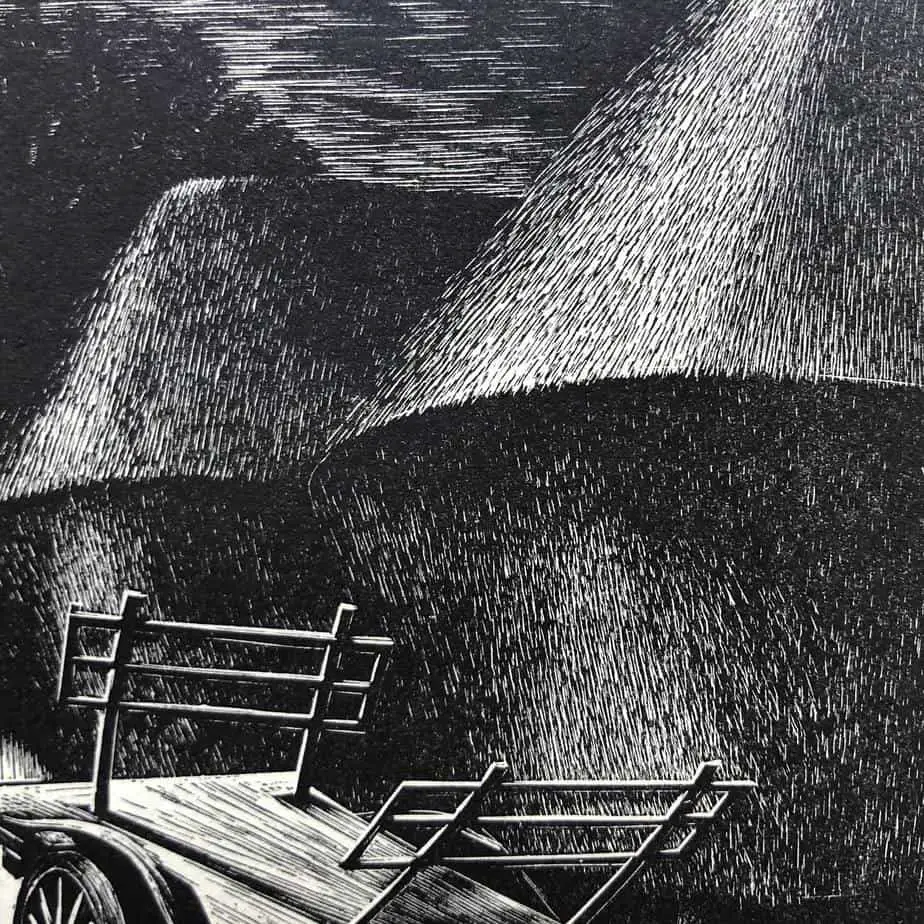
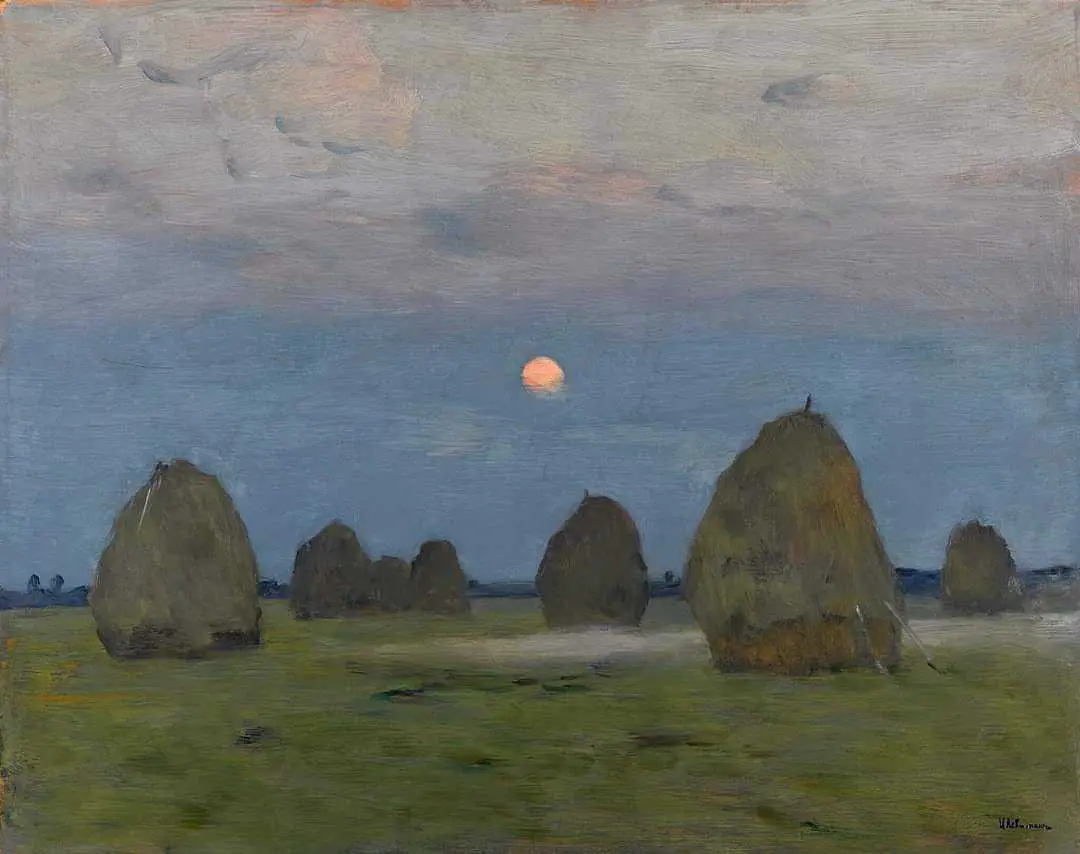
When superstition mixes with religion, you get the image below.
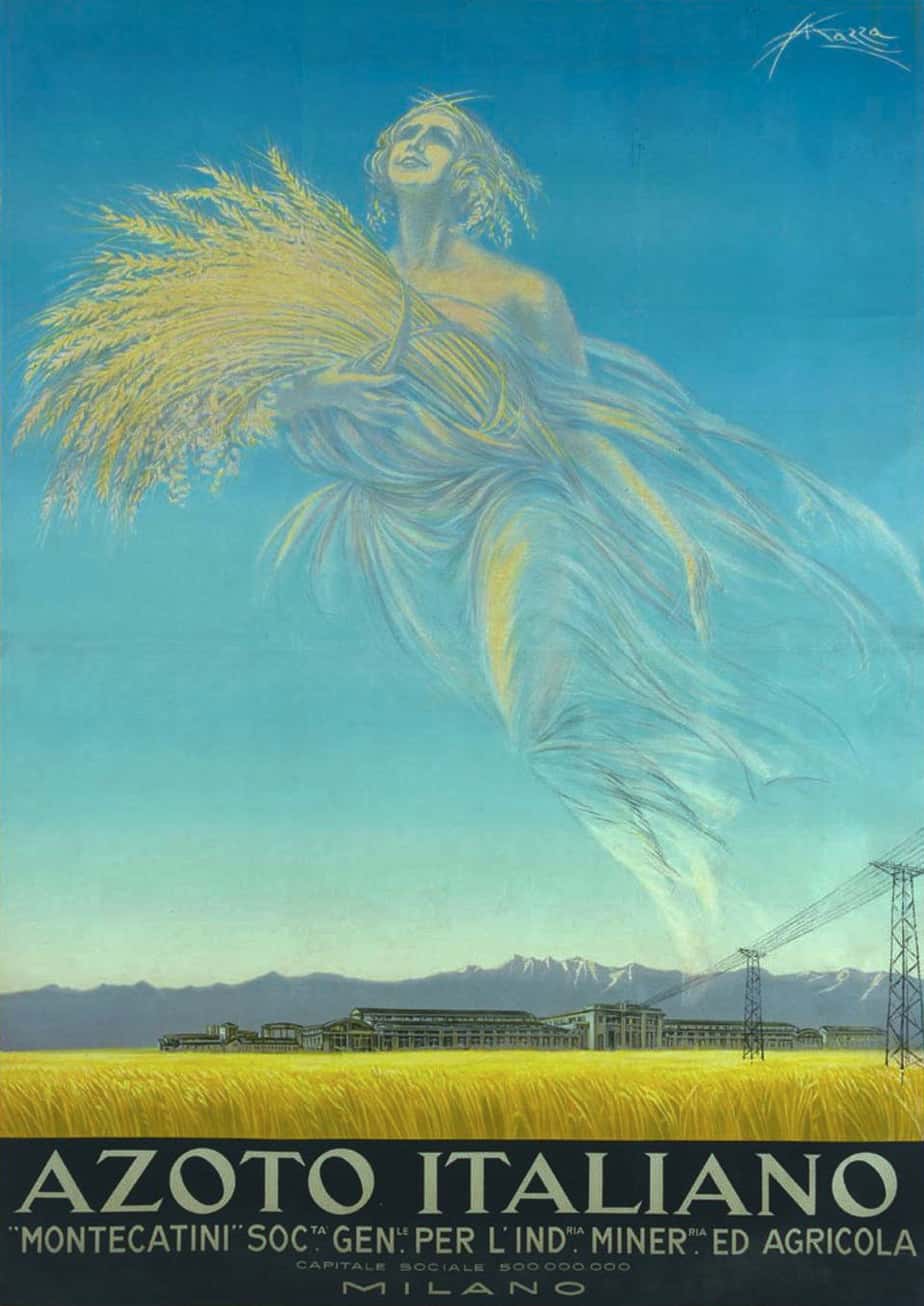
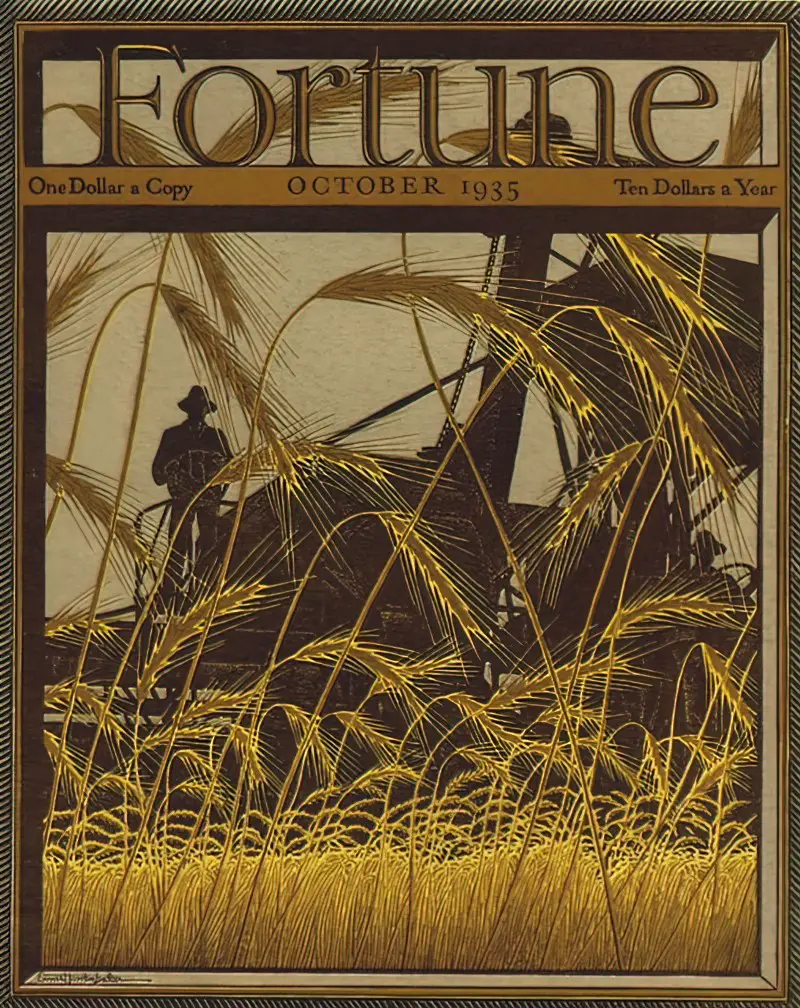
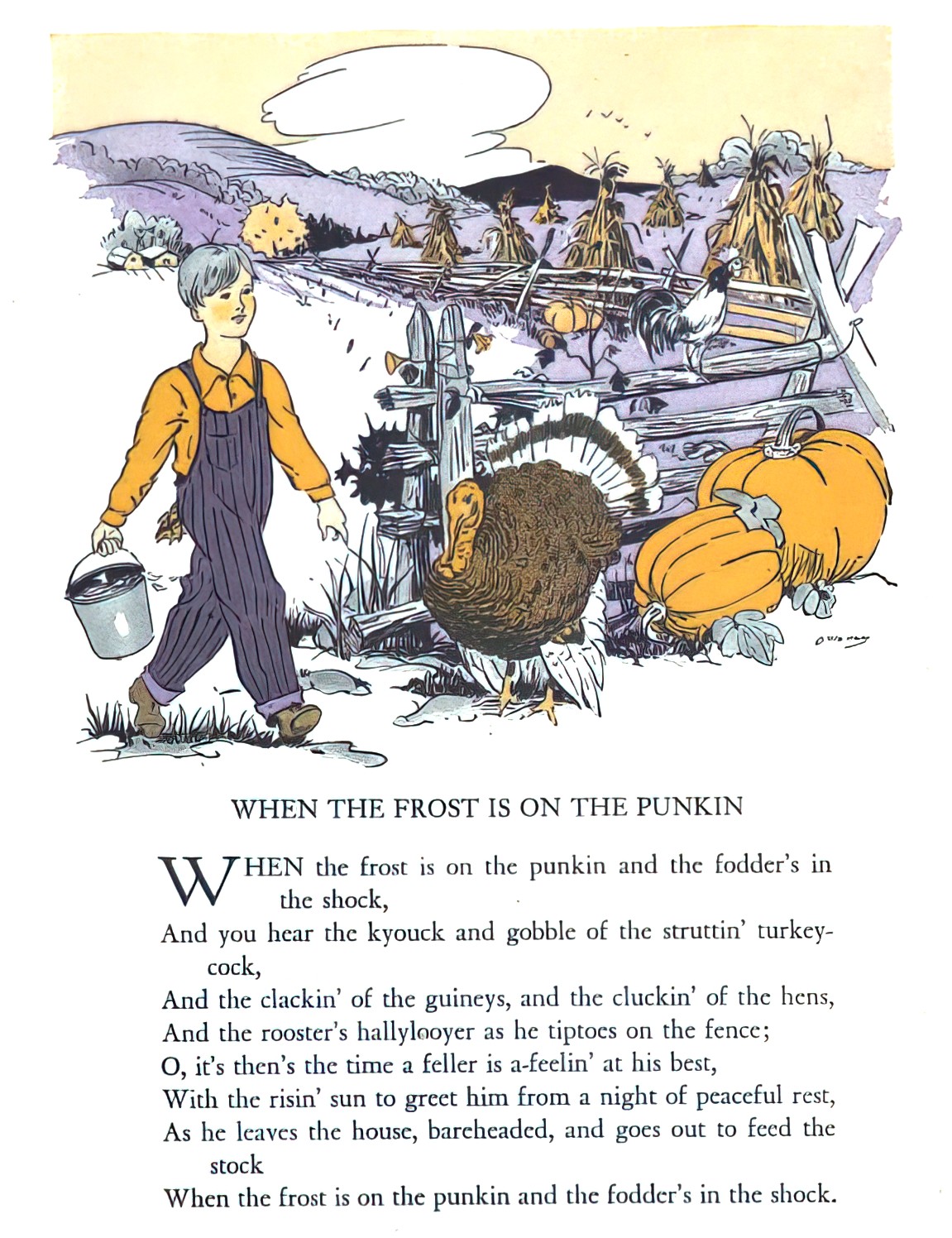
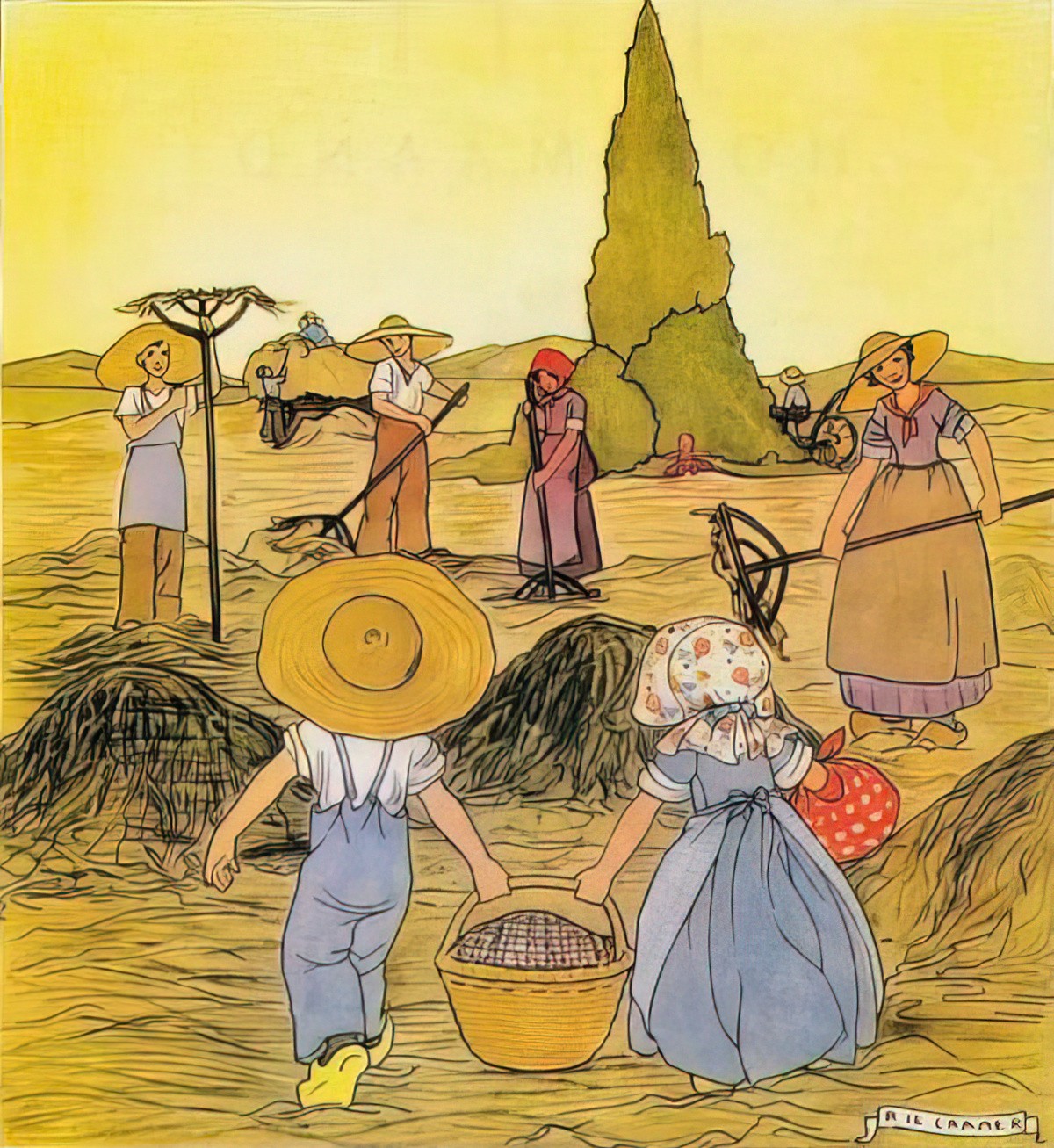
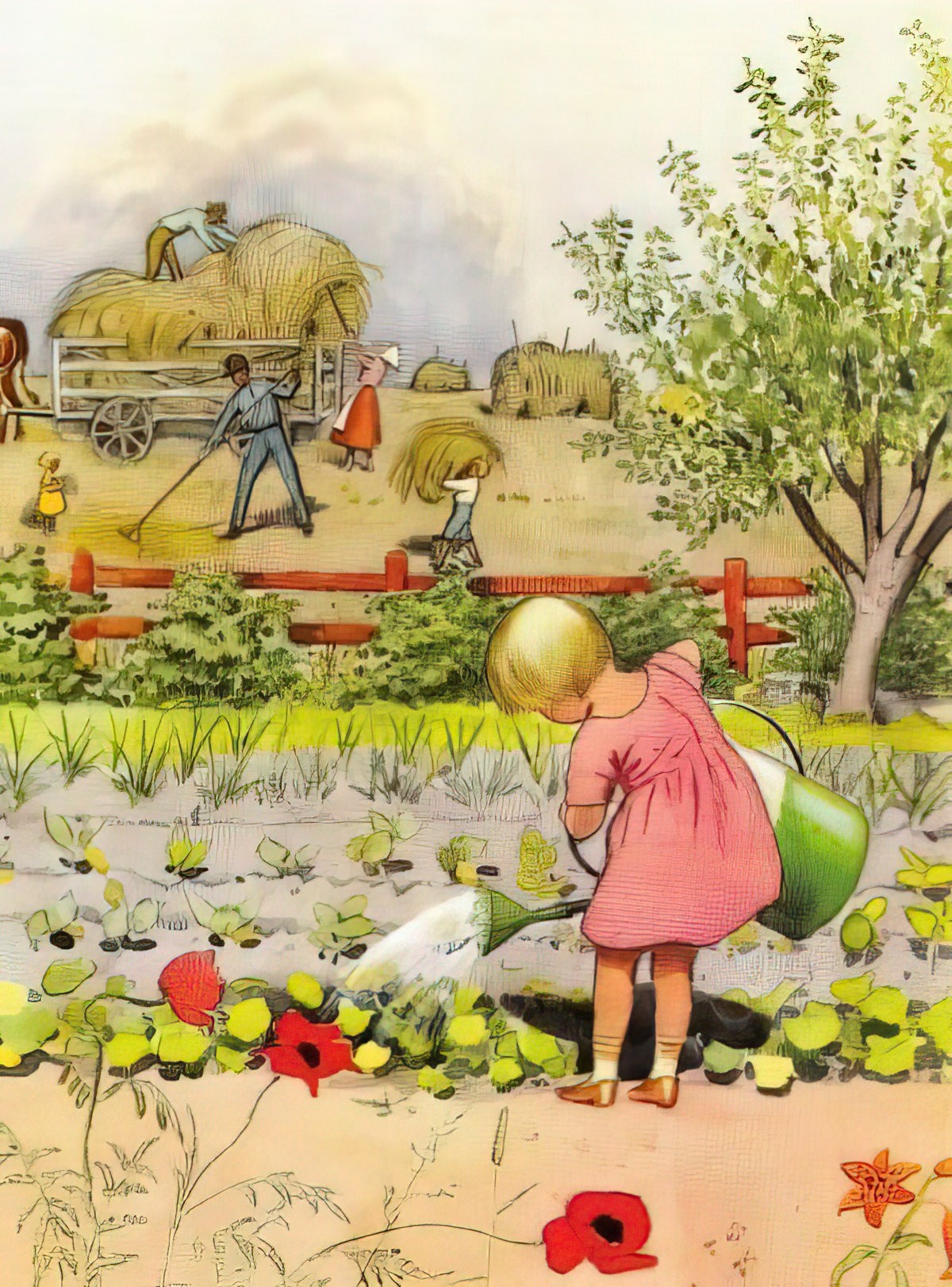
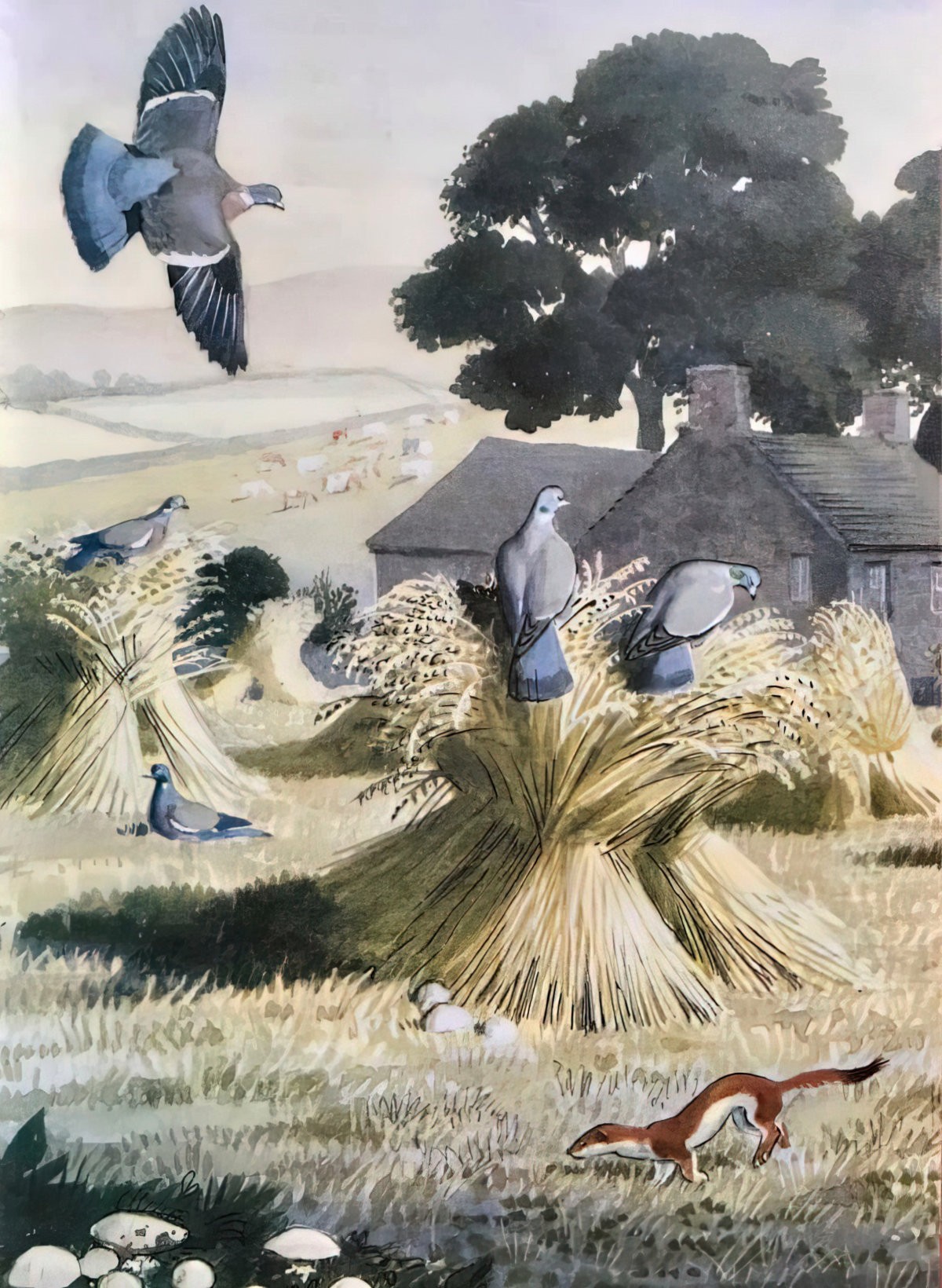
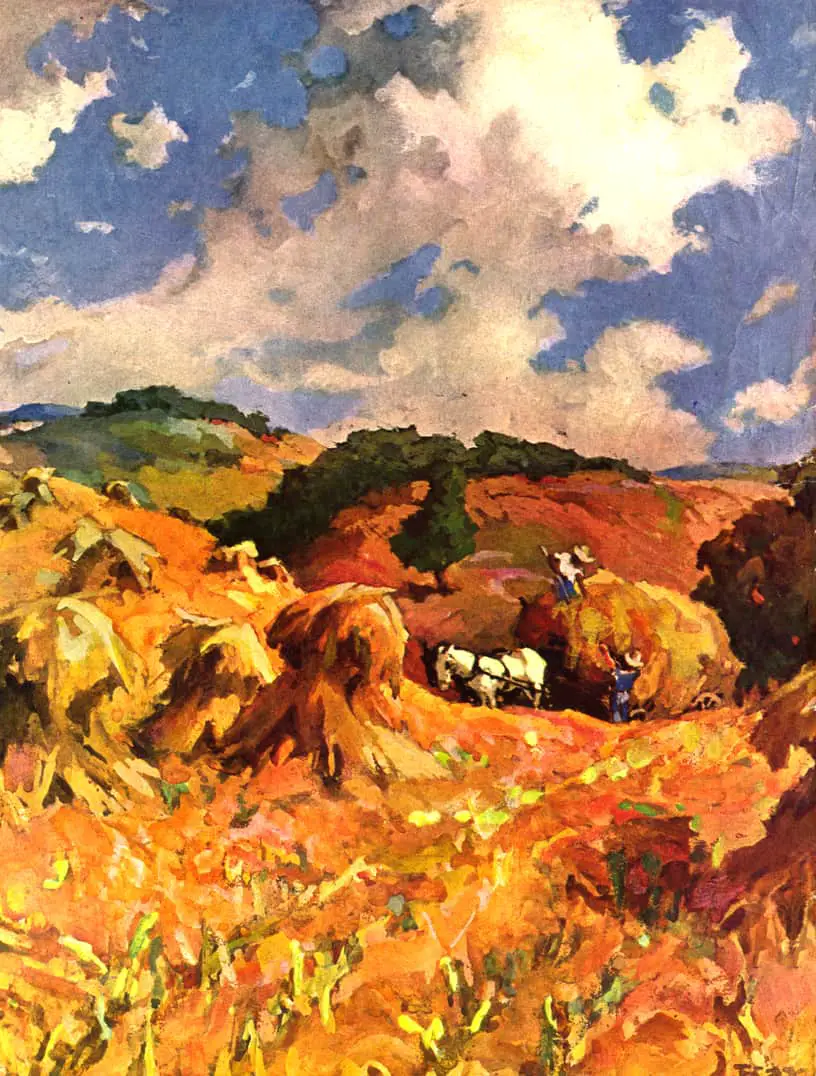
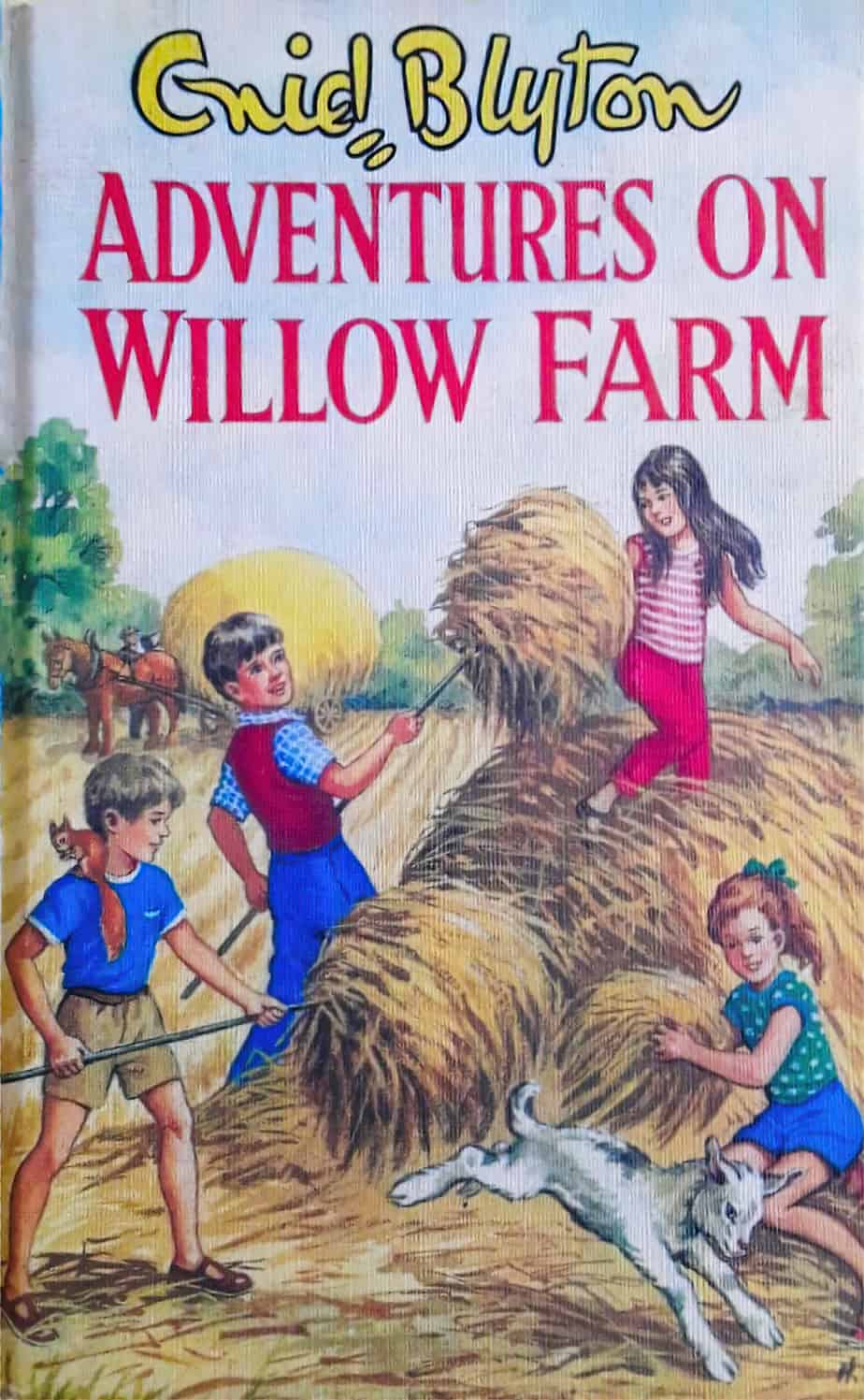
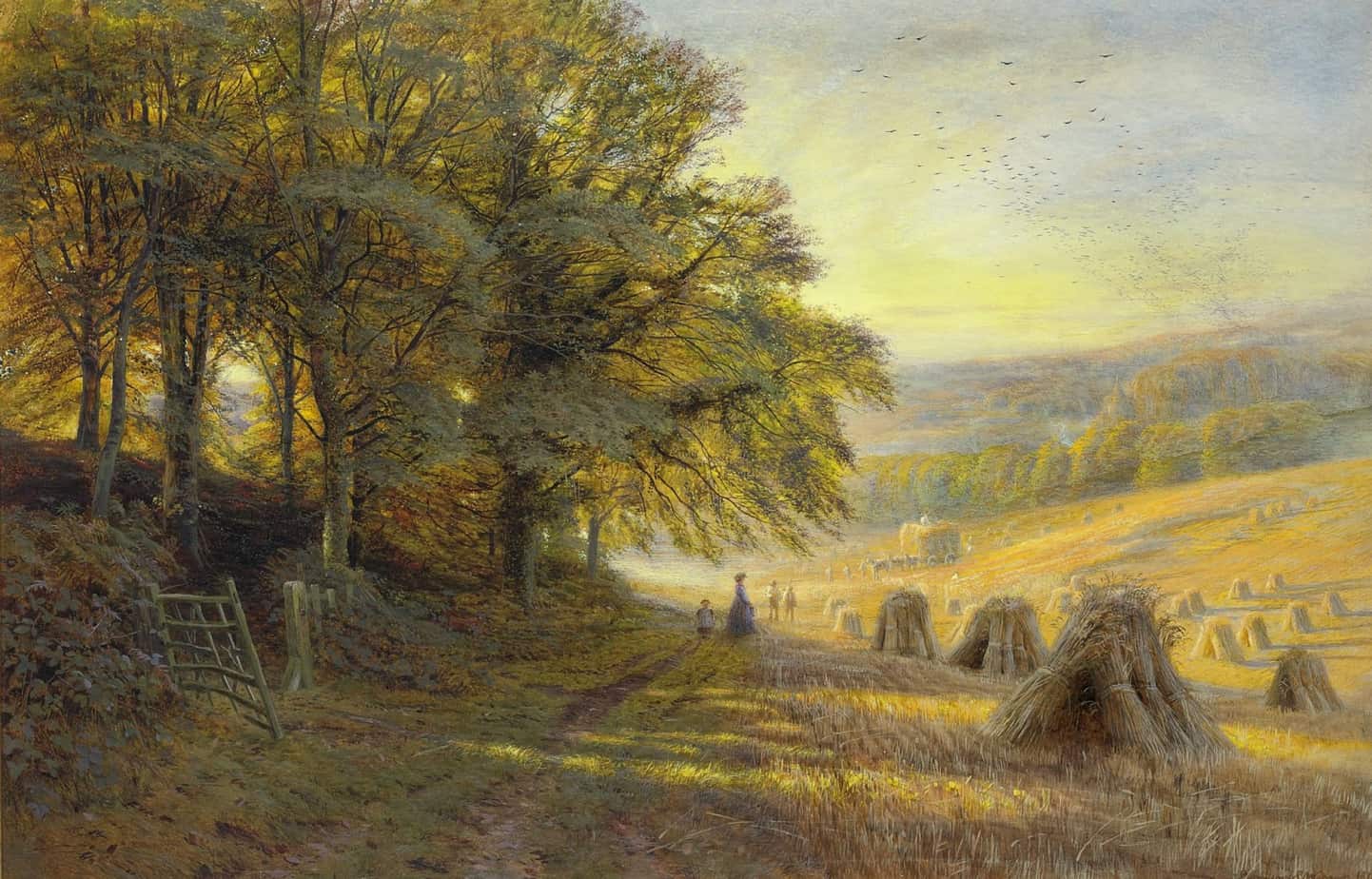
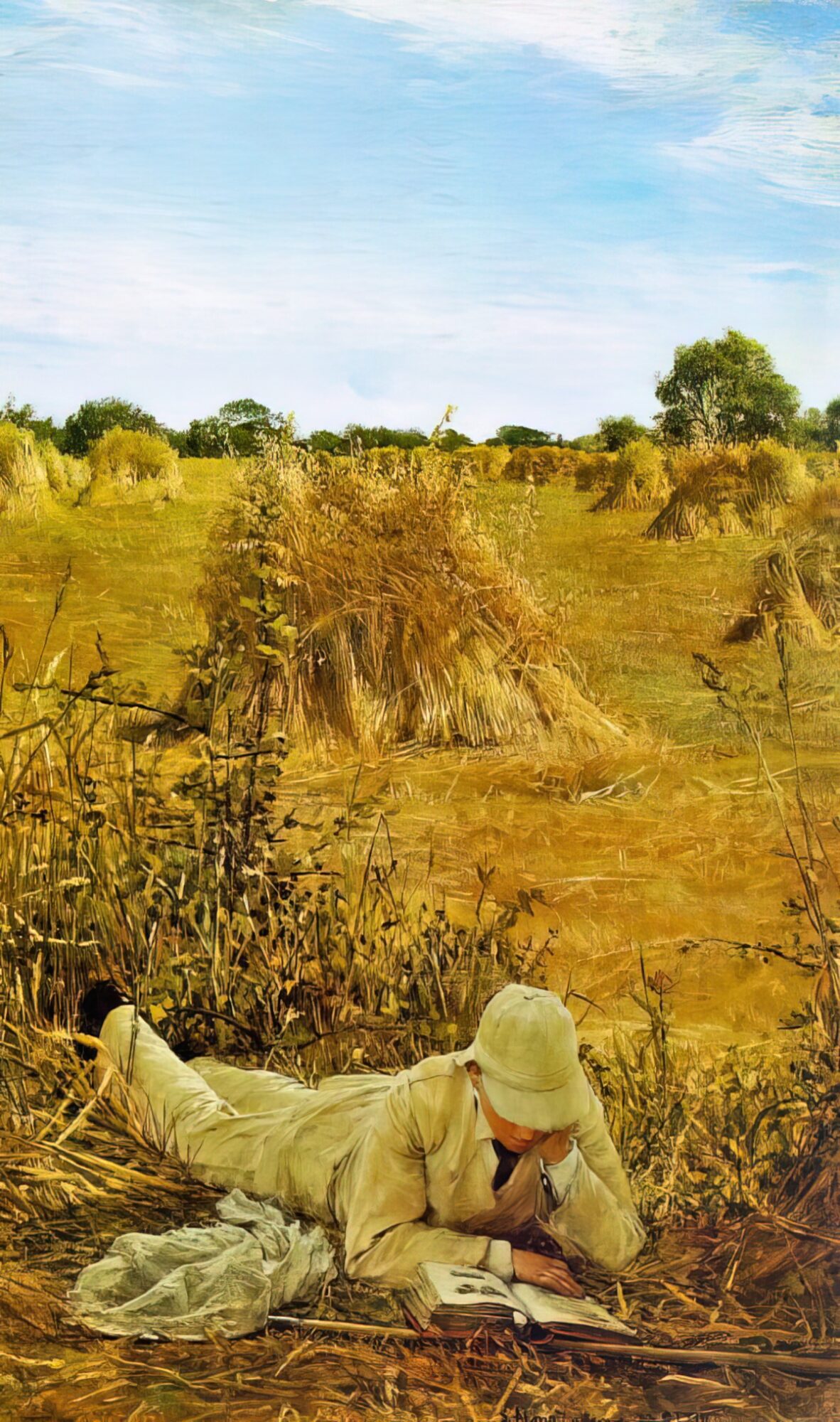
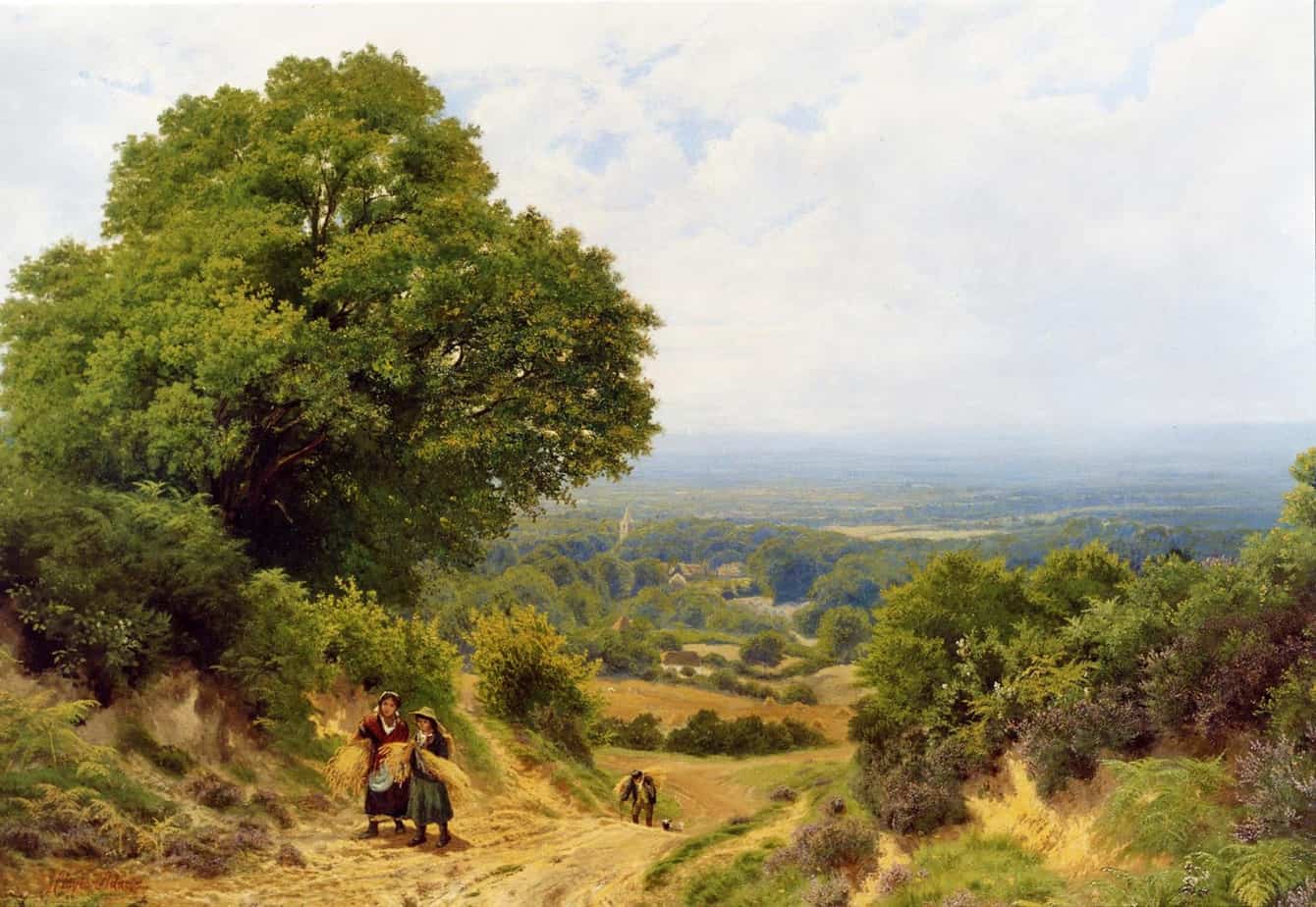
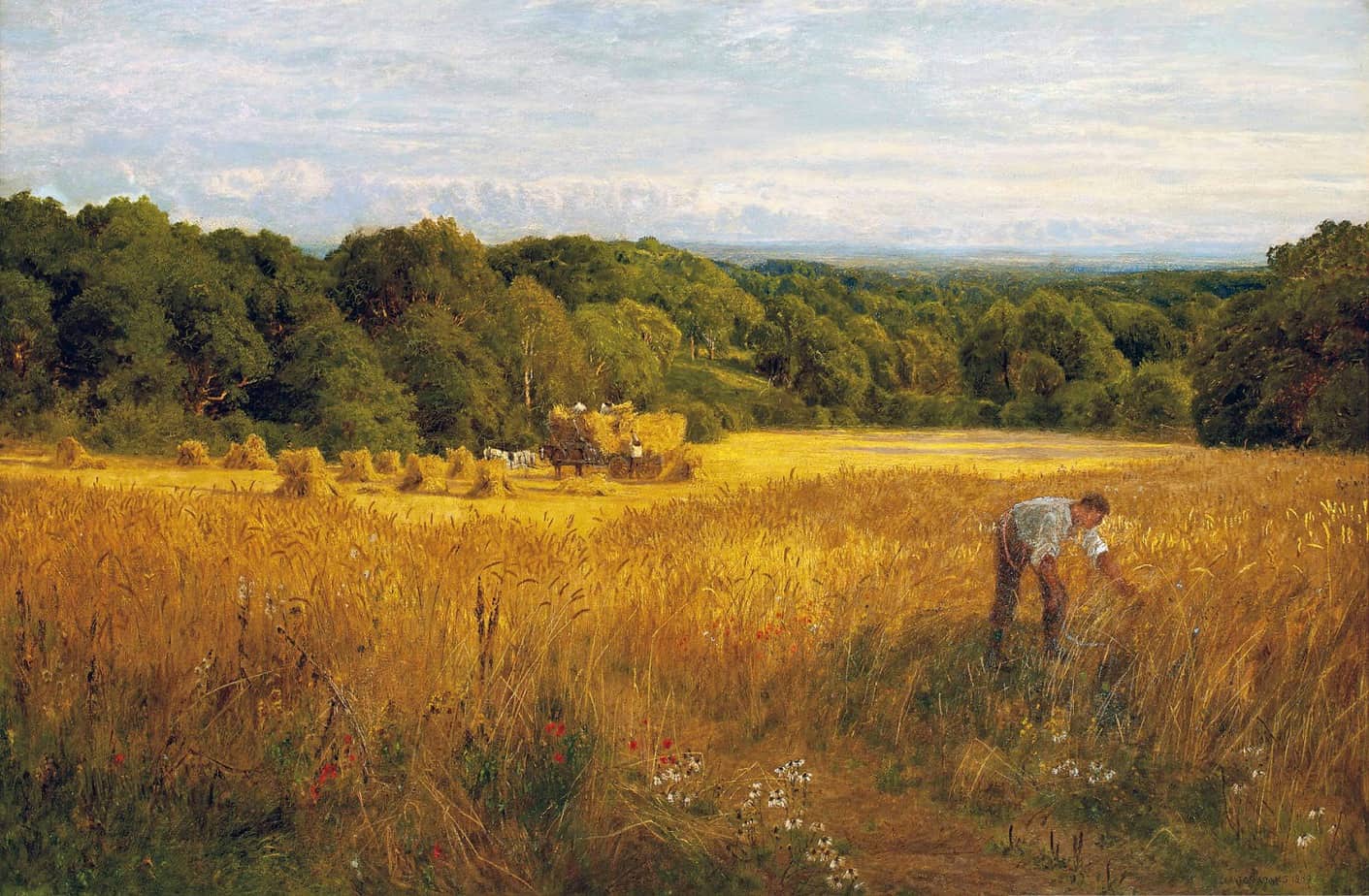
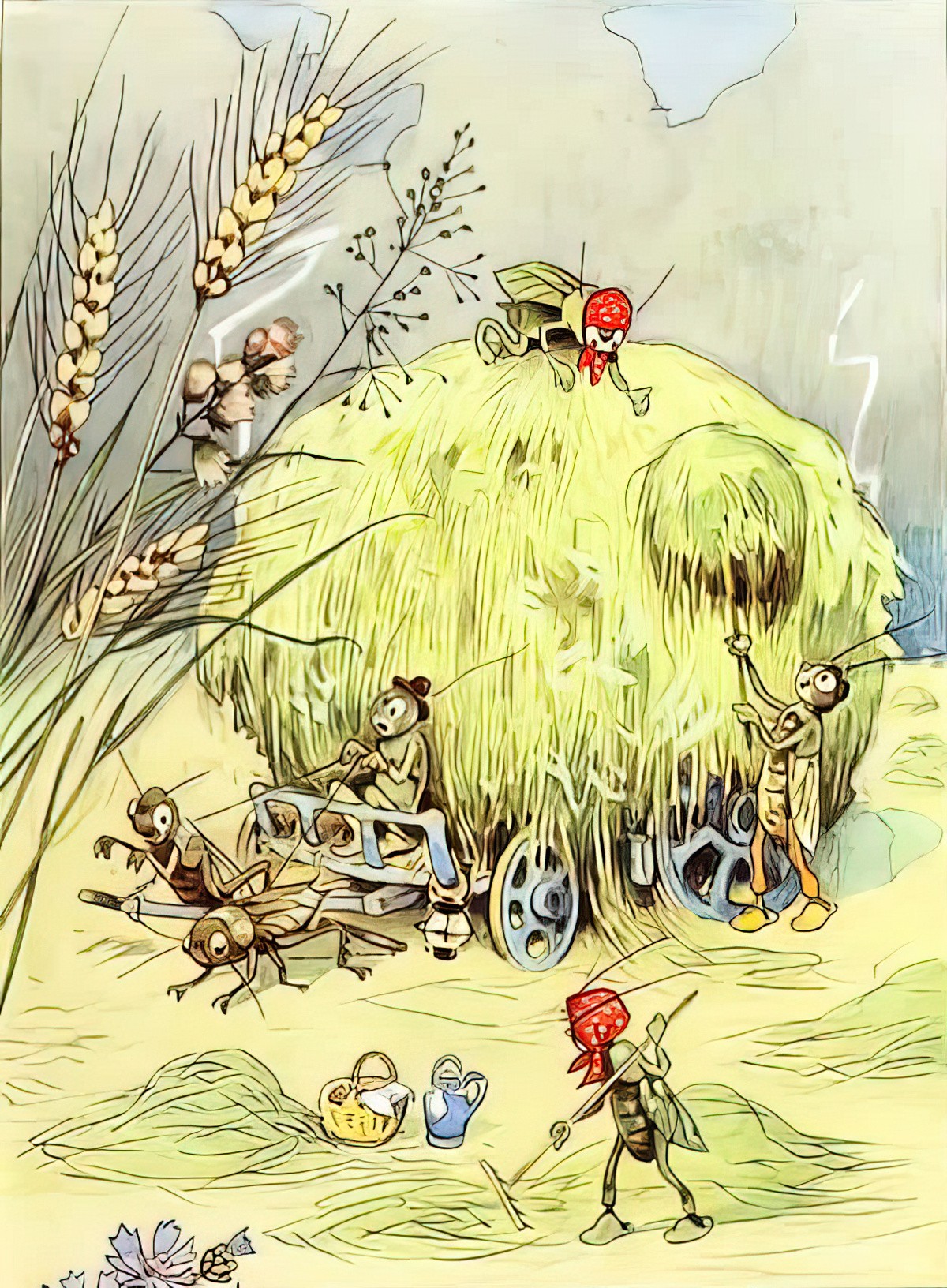
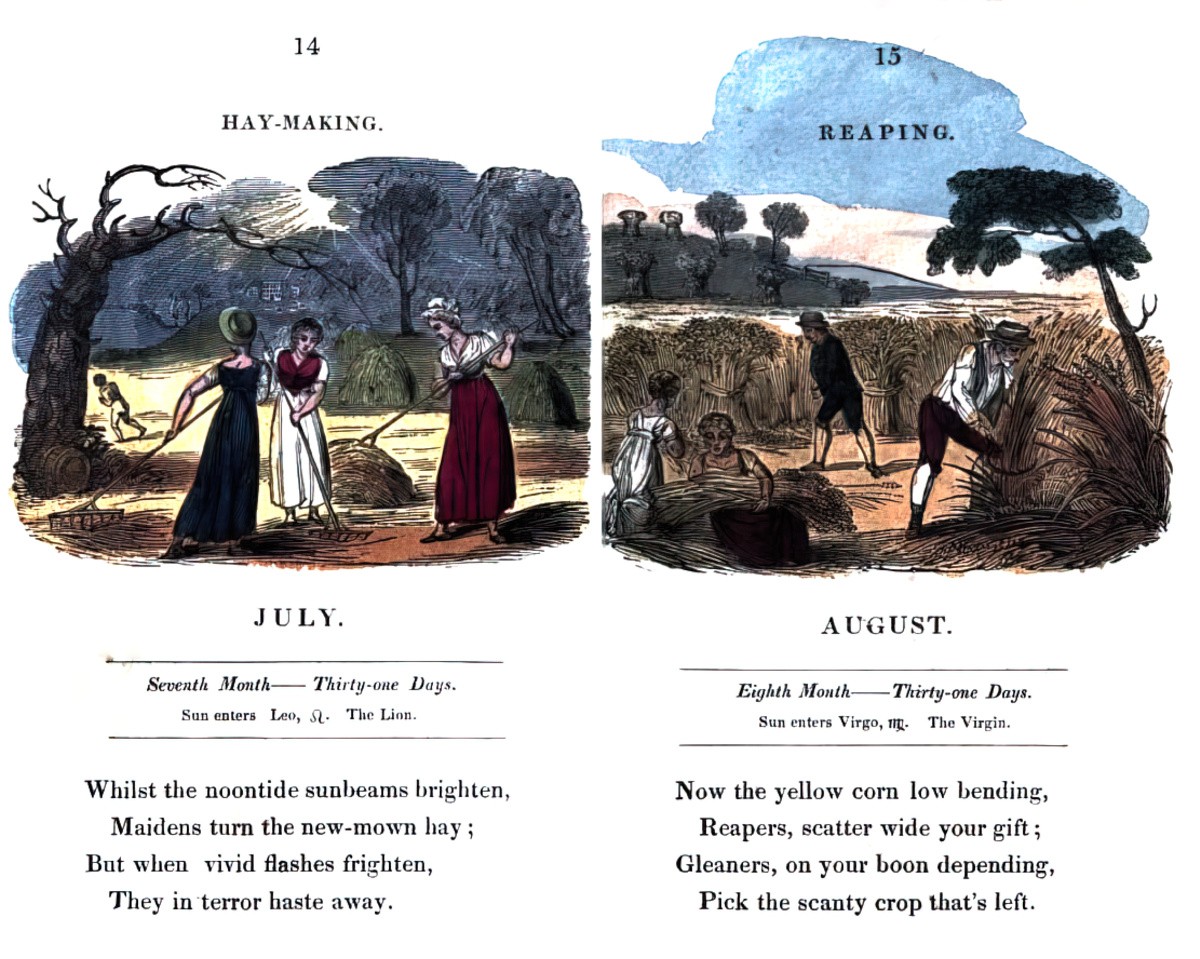
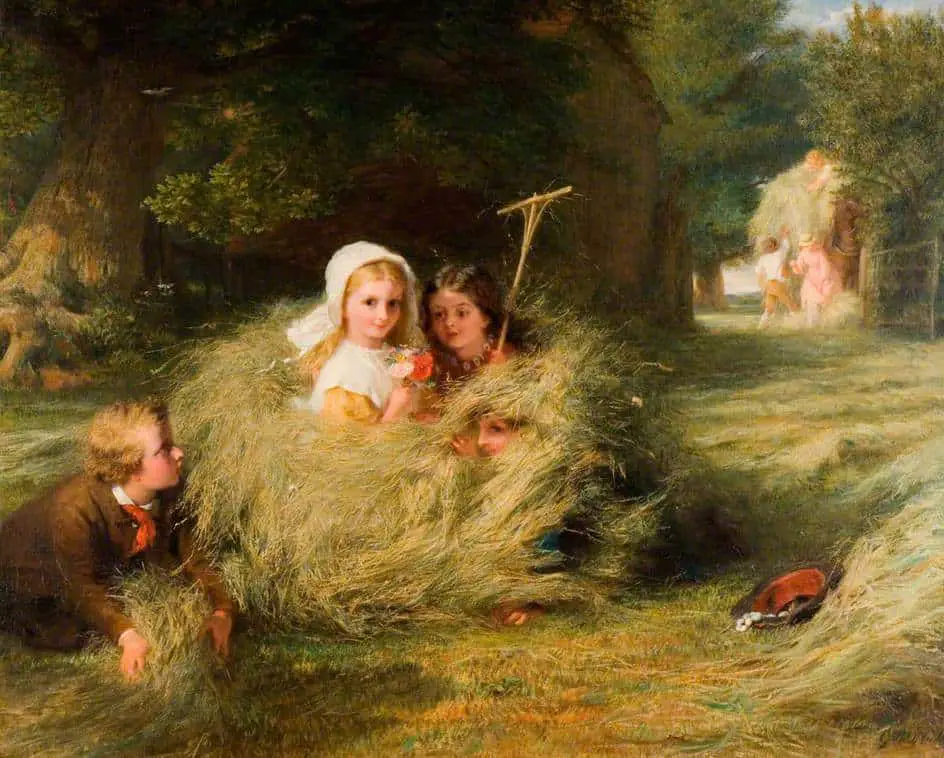
Is the image below a cosy one or a scary one to you? It’s from the middle ages.
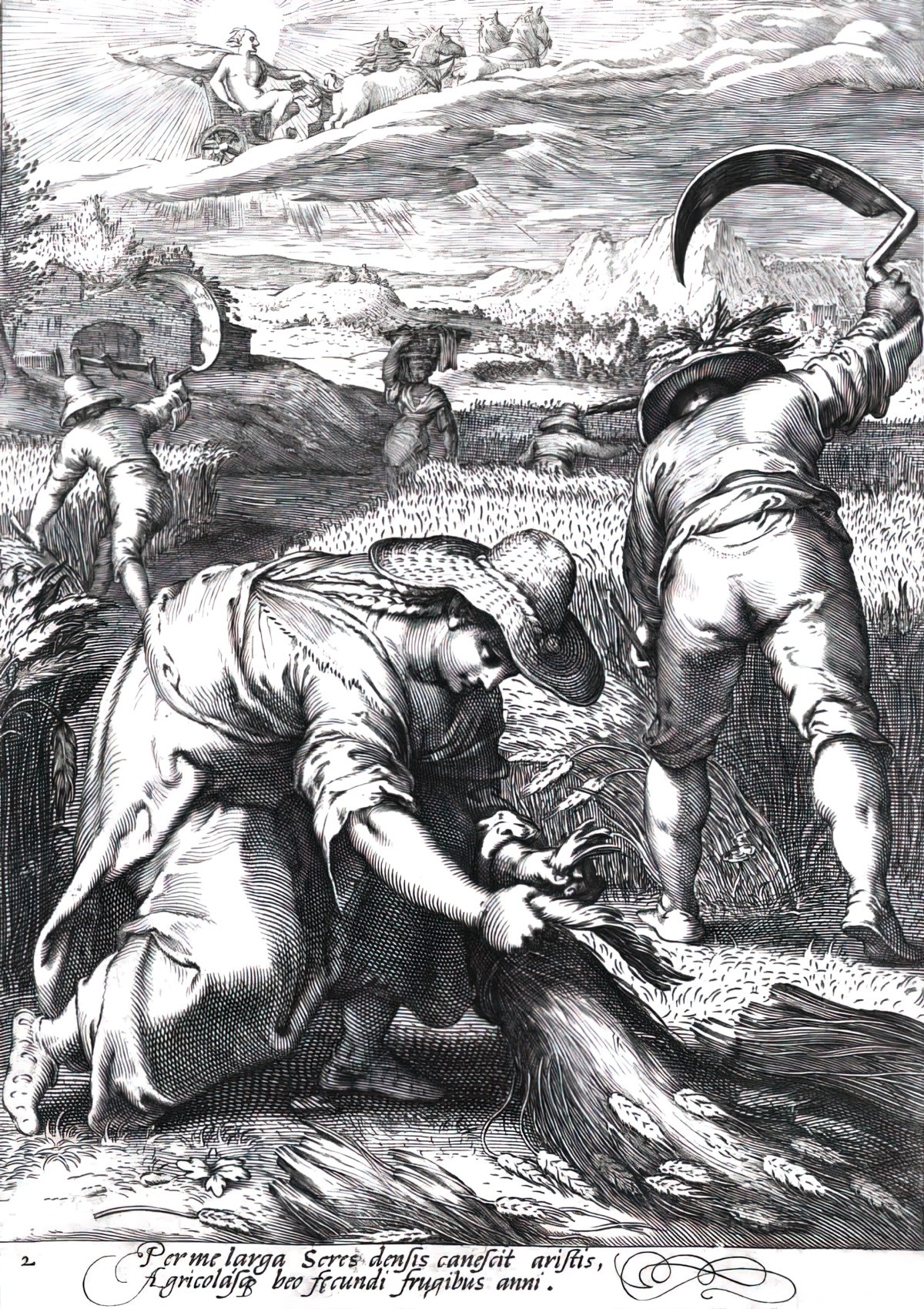
Even in images meant for adults, the hay imagery is an important way advertisers historically convey the wholesomeness of farm life, helping non-farmers to avoid the realities of hard labour, pestilence and slaughter.
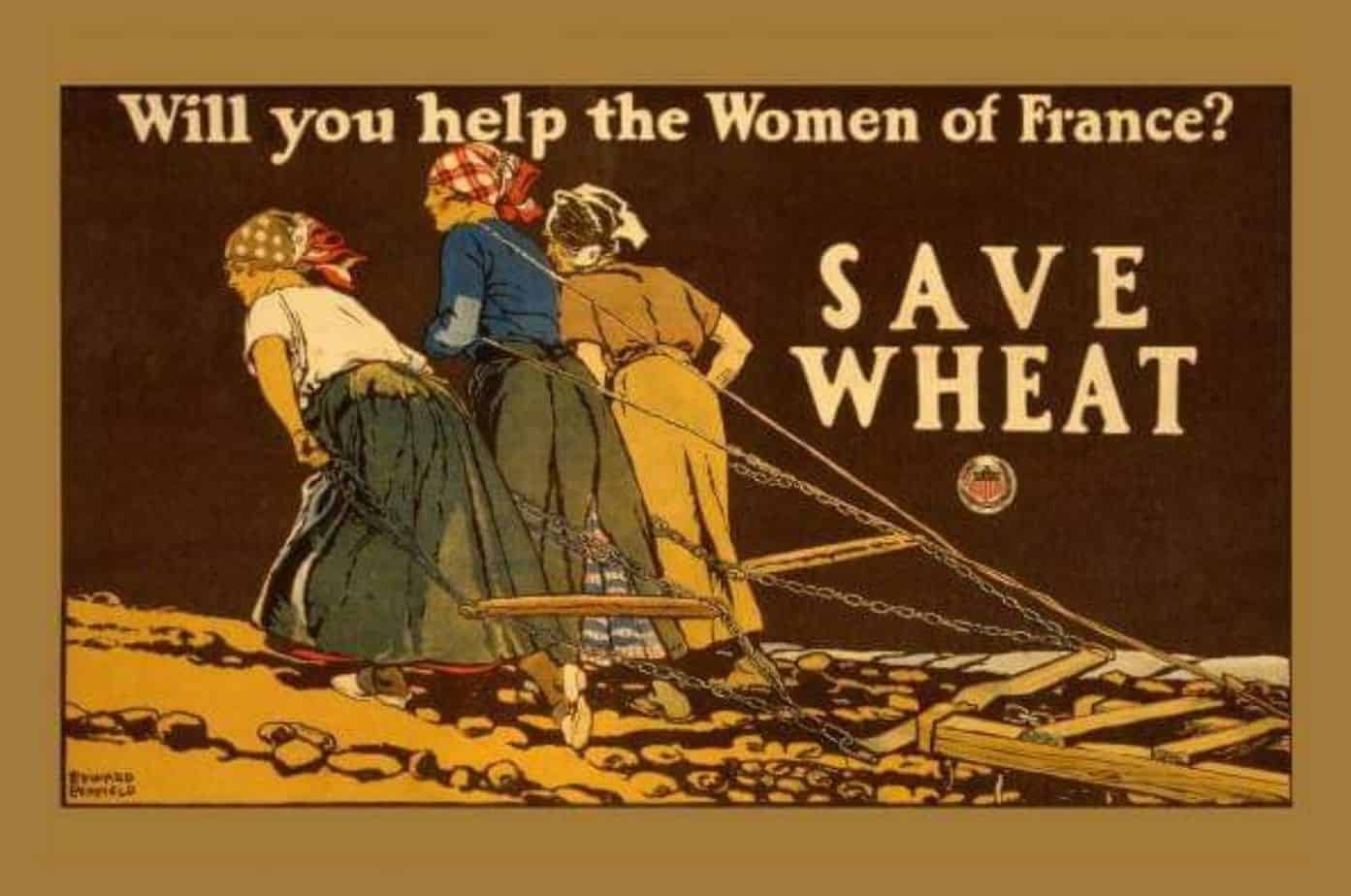
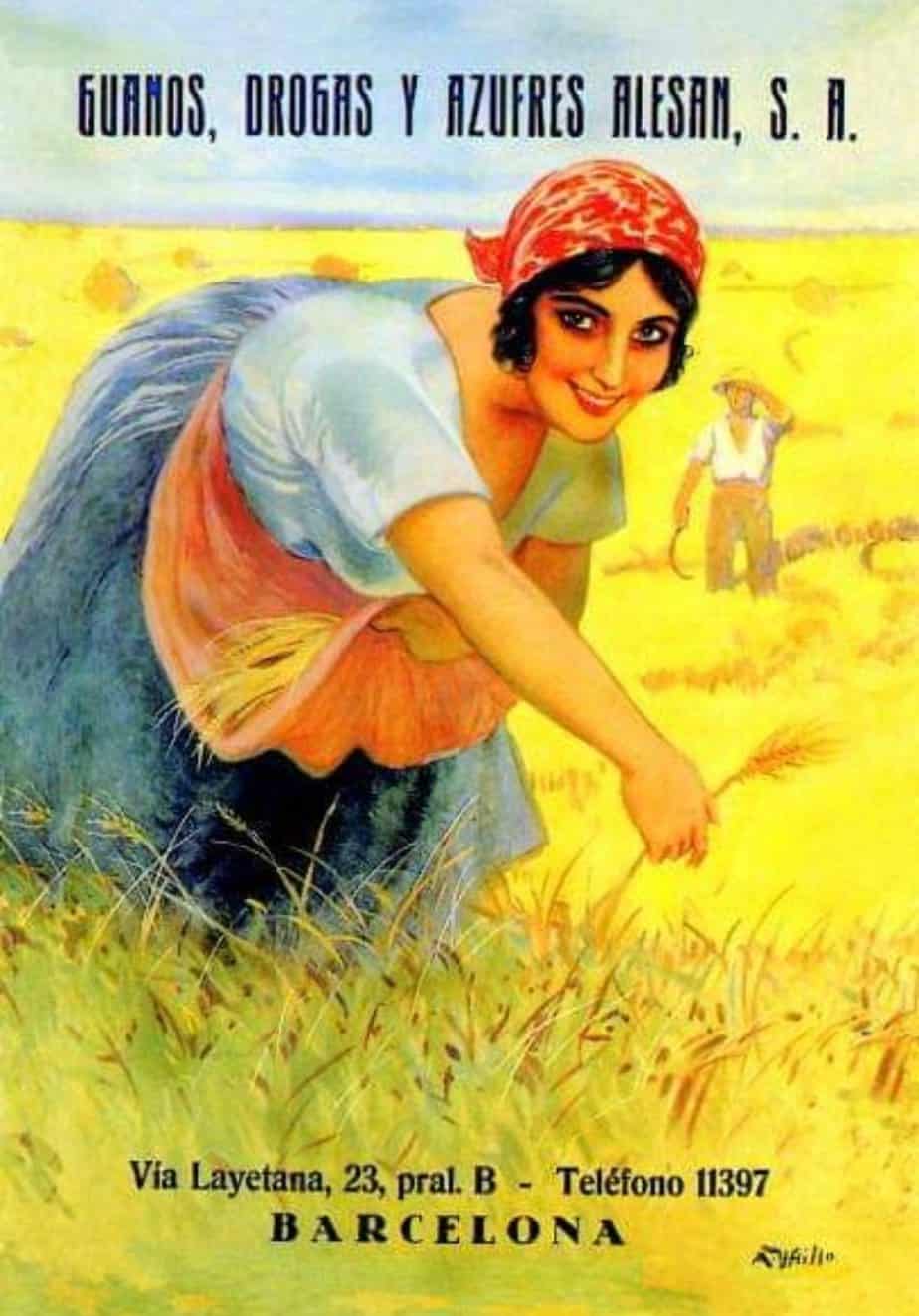
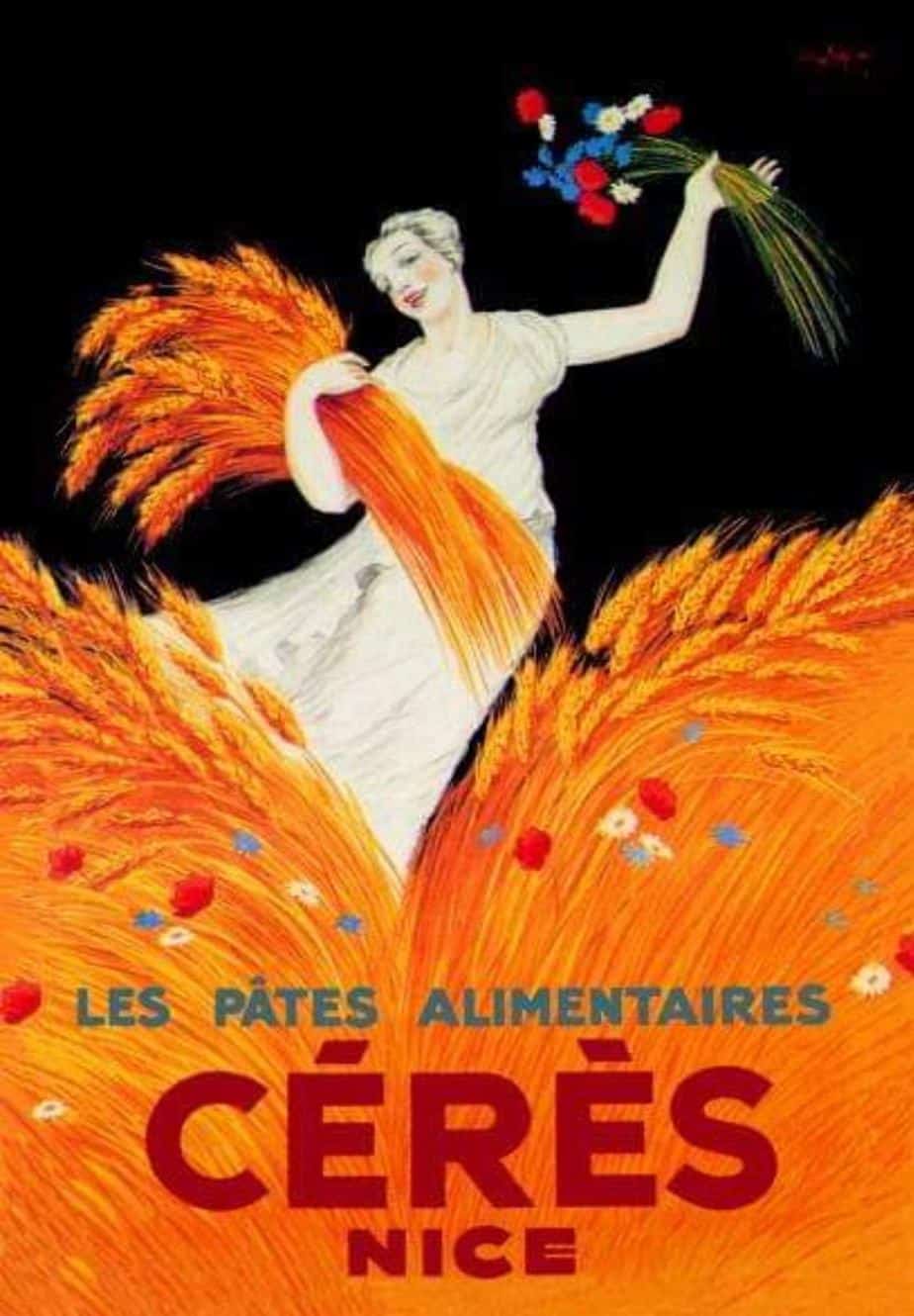
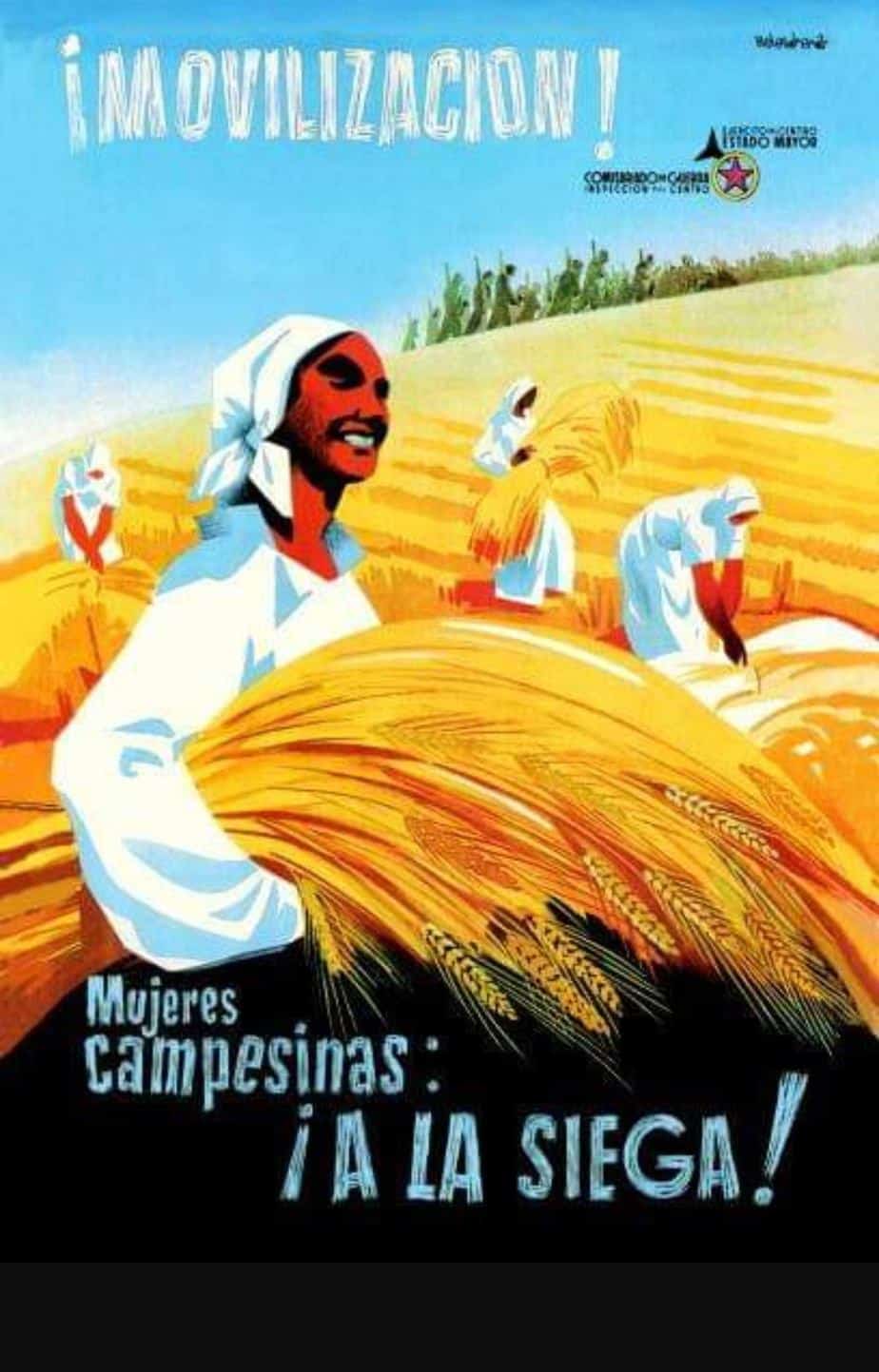
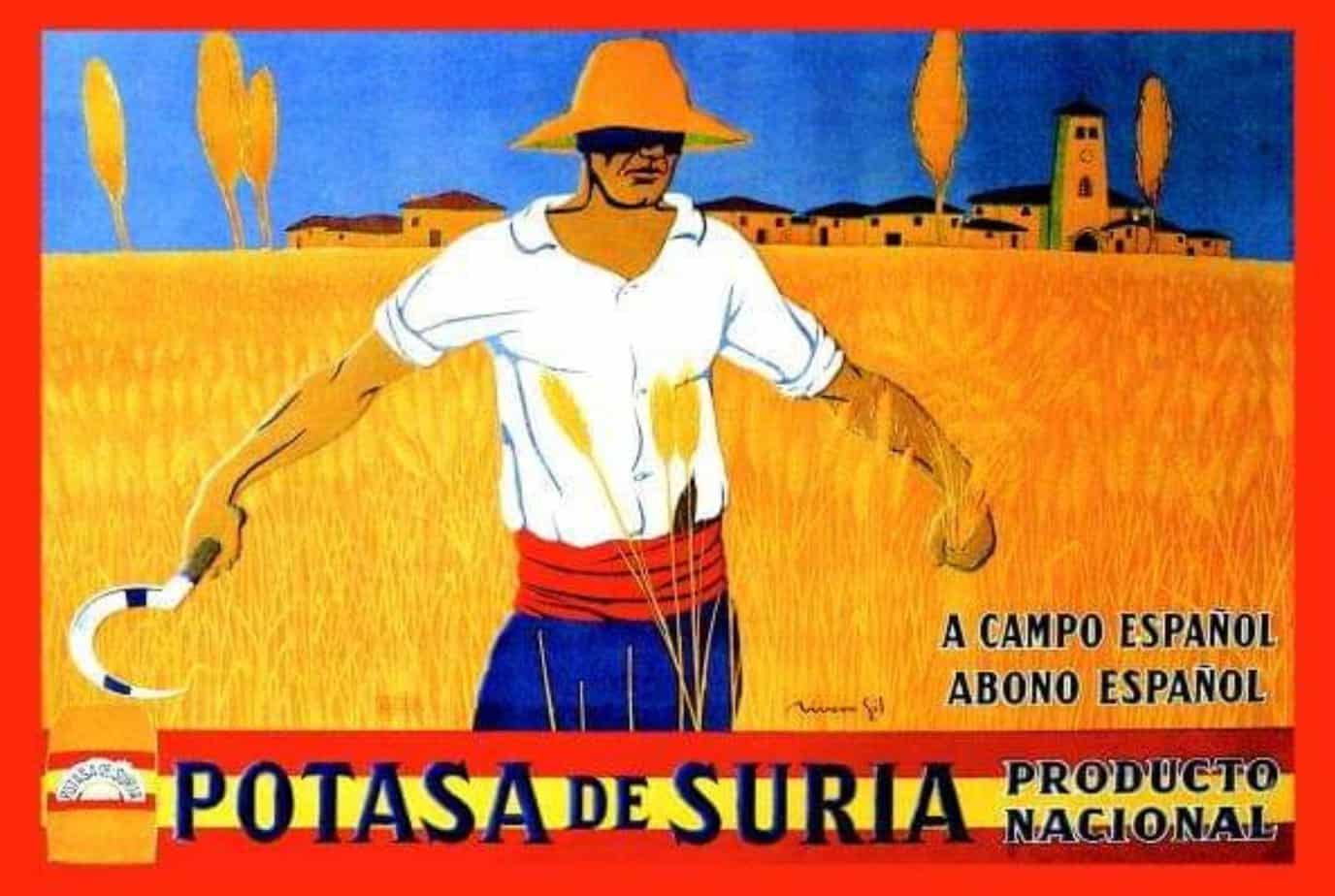
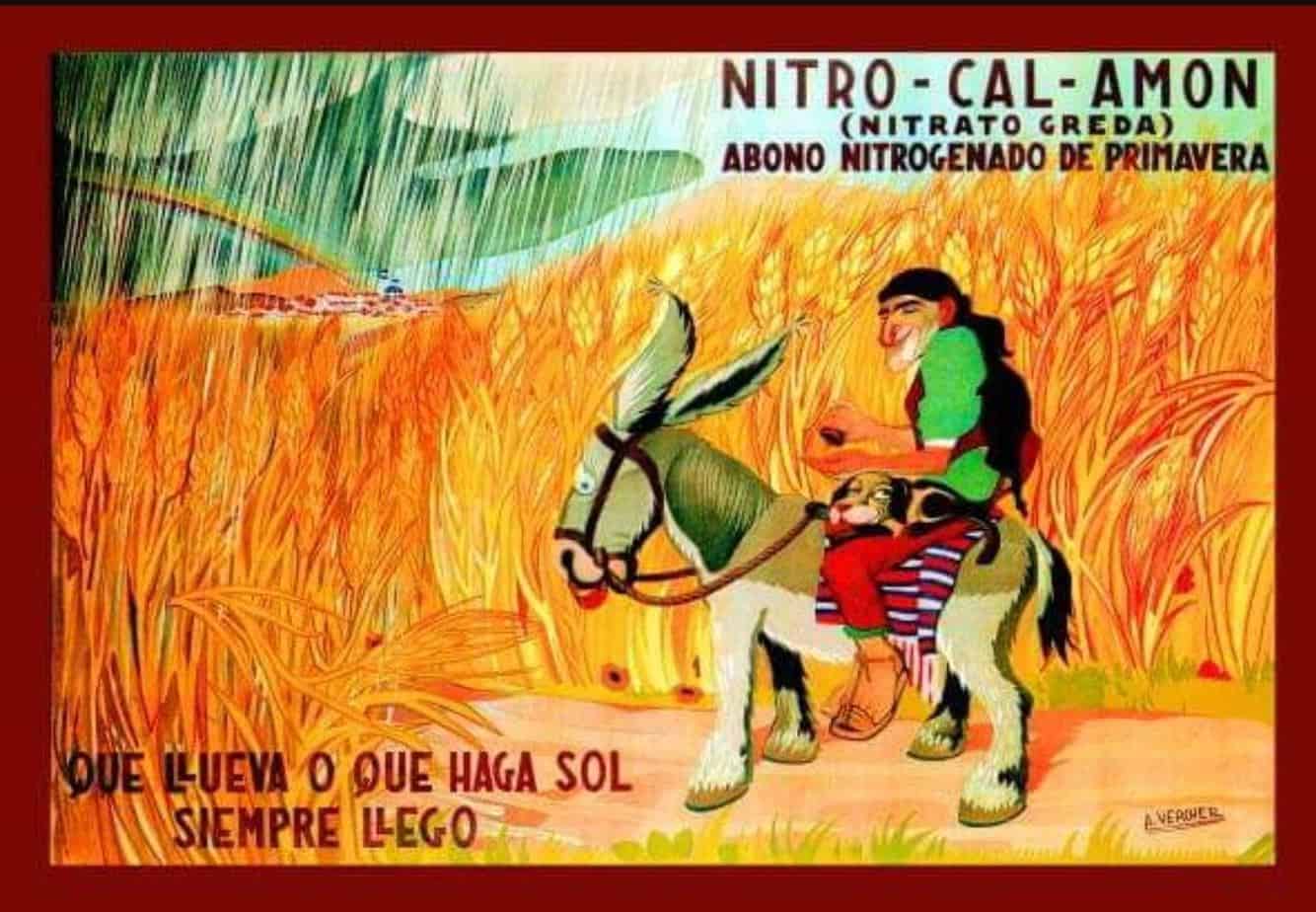
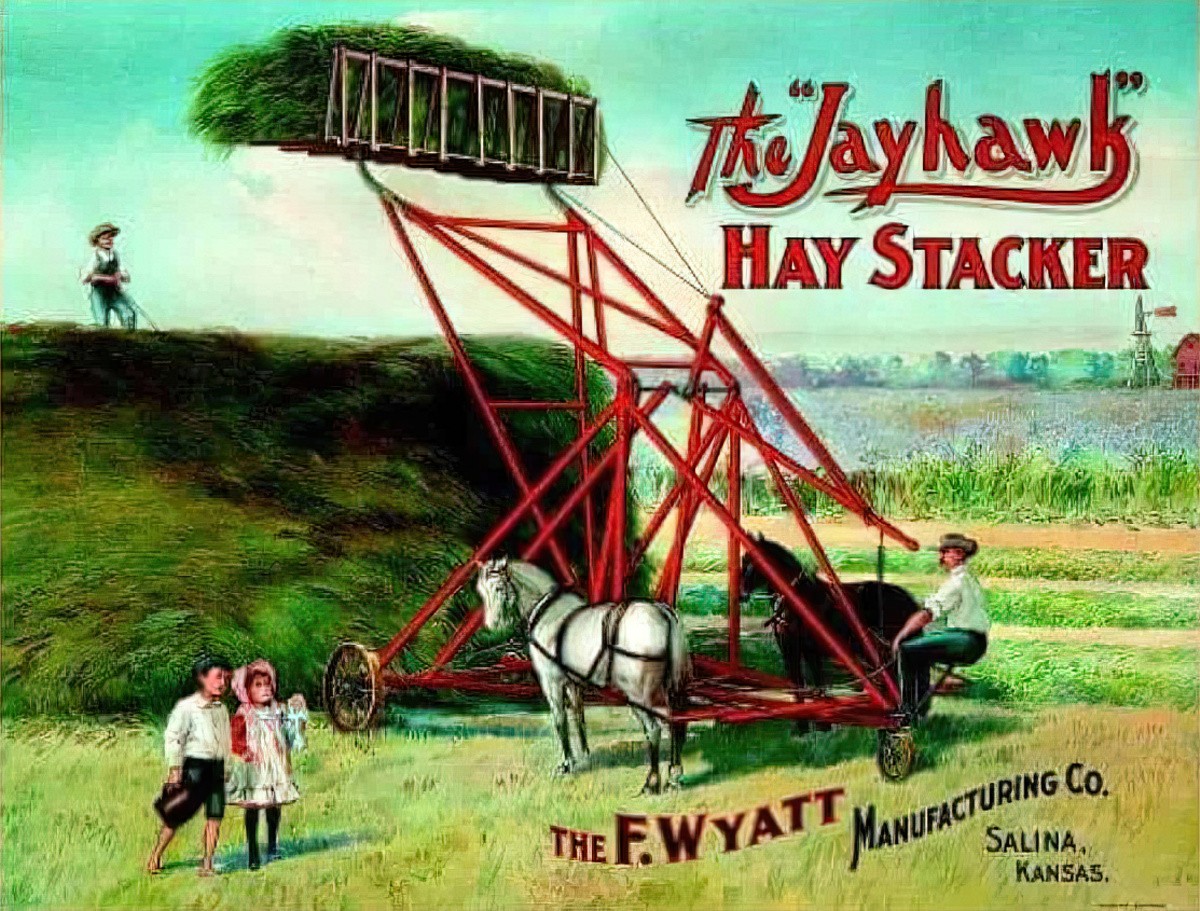
But then you’ve got the haystack. The hay stack can be a different beast altogether, because in the twilight it literally looks like a monster. This must come from the realities of rural life of yore. I’m reminded of “The Wolf Pack” chapter of Little House In The Prairie, in which the little house is one night surrounded by wolves. Pa has to stay up all night with his shotgun, because he hasn’t yet made doors for the house and barn.
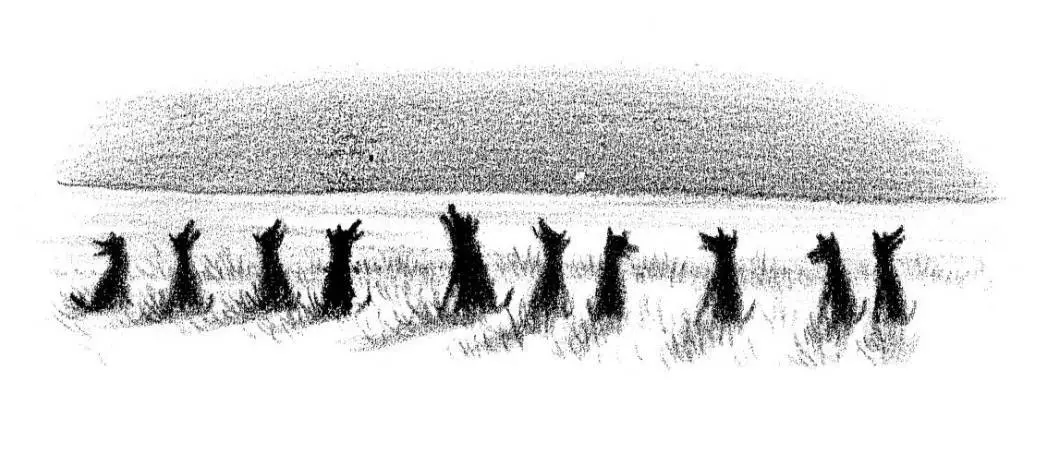
My kid asked if those were wolves or rabbits. Fact is, under moonlight, creatures (or haybales) can look like almost anything. The only limits are the imagination.
Artists and storytellers can do what they want with haystacks. They can be horror props or utopian props.
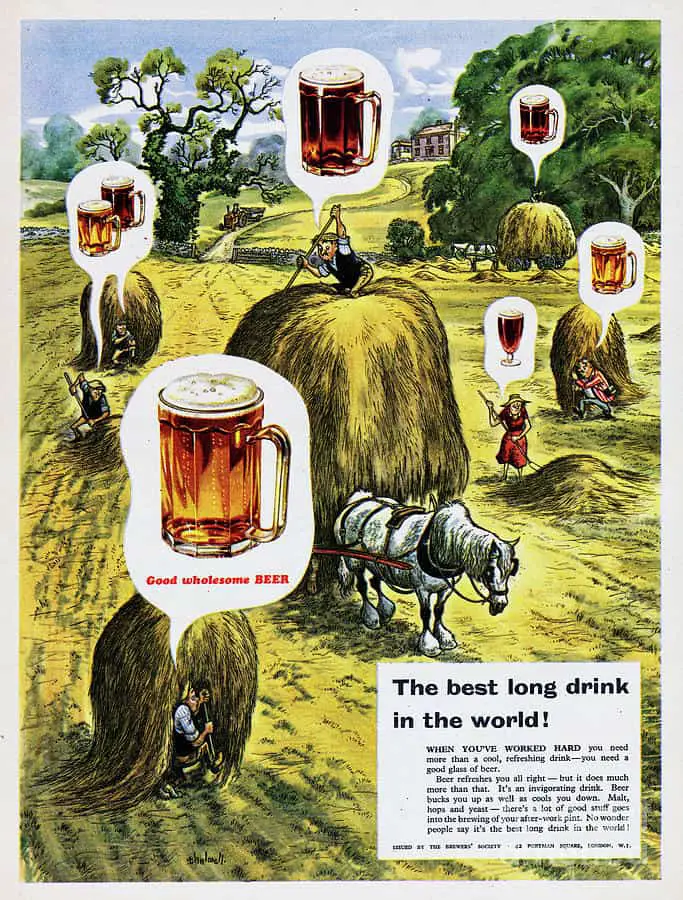
I’m pretty sure the haybales below are meant to look utopian and pleasantly pastoral, but if you’ve just looked steadily at Kittelsen’s walking moonlit examples, you may be affected as I am. These haybales have an ulterior motive.
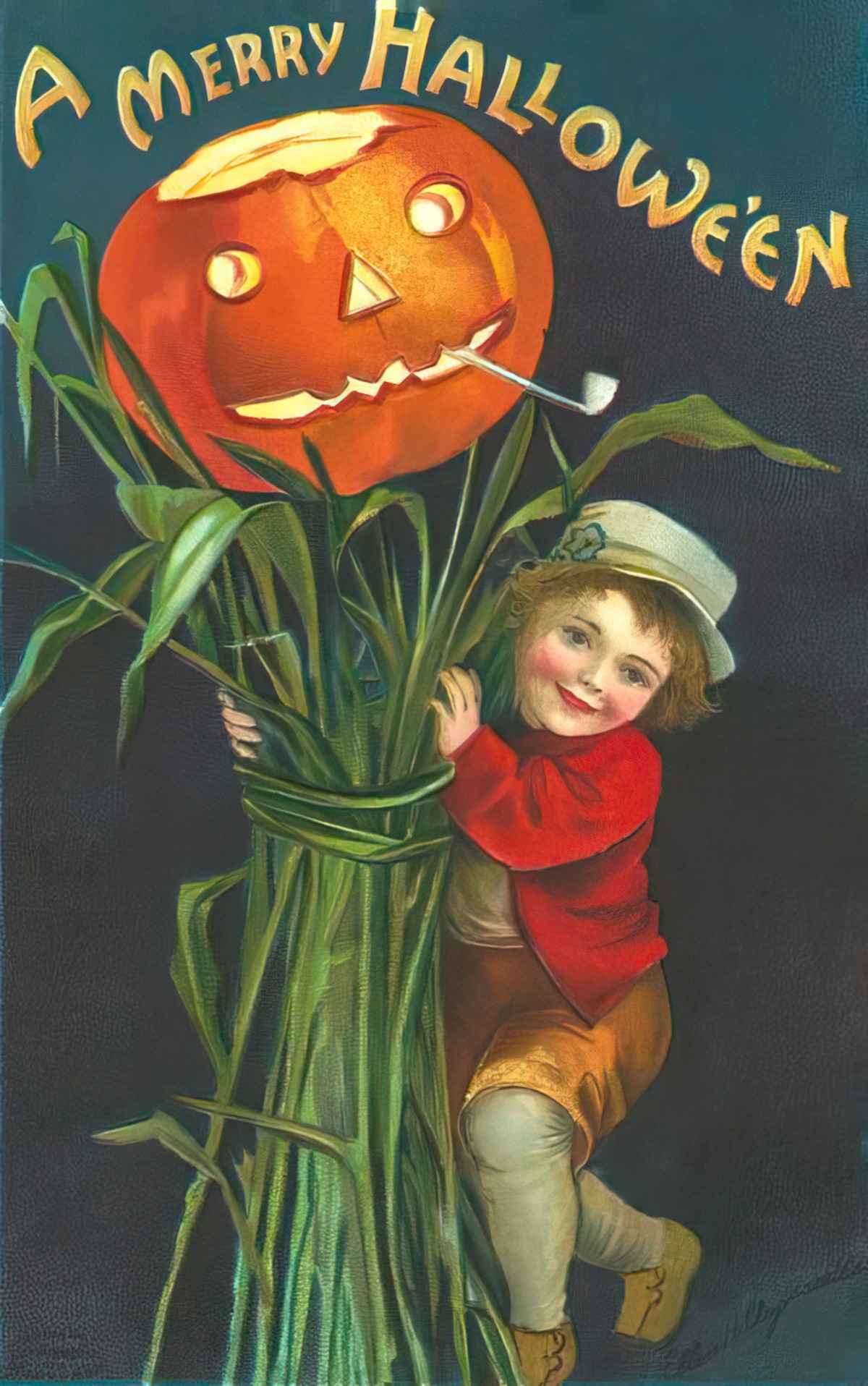
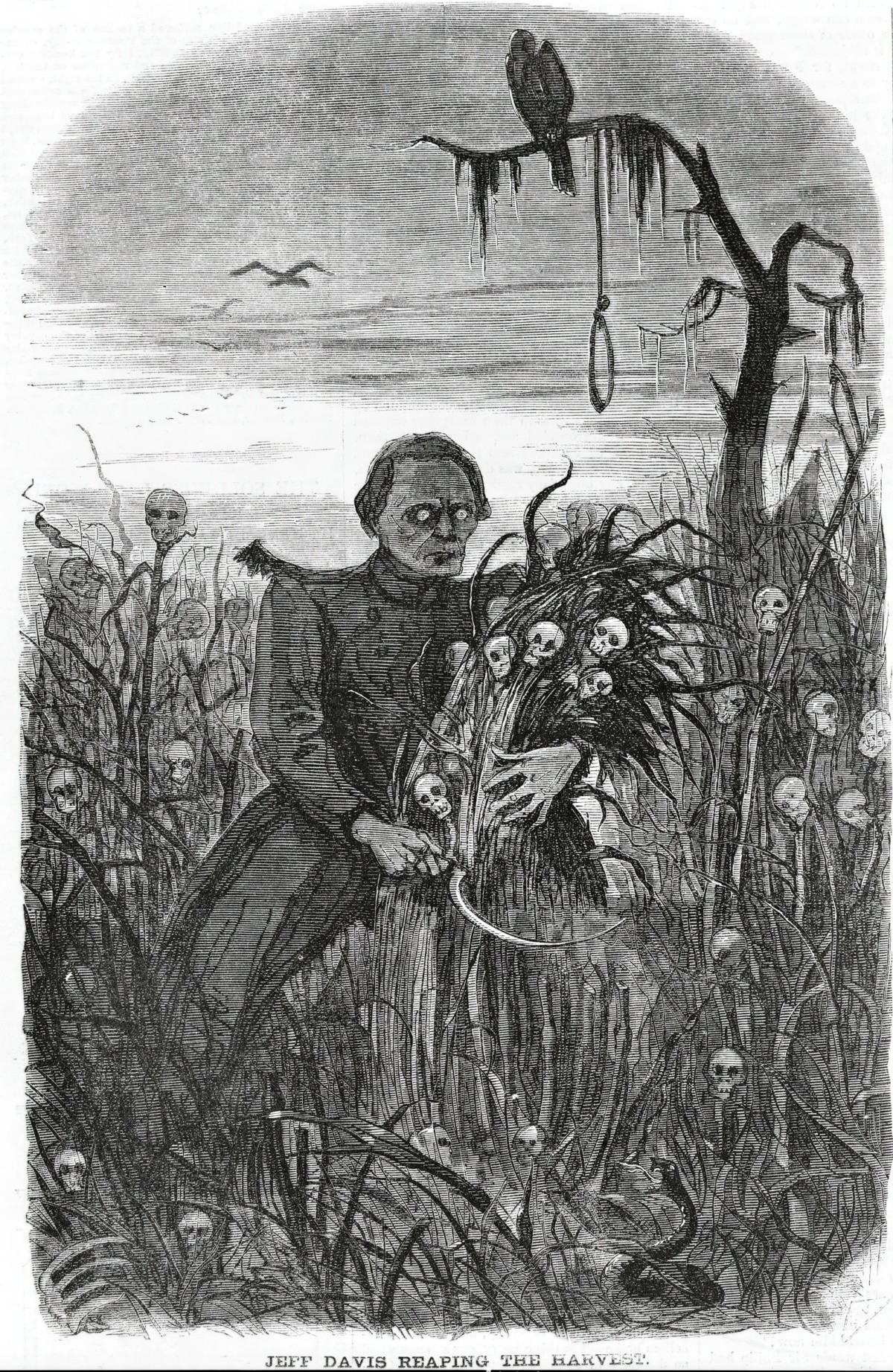
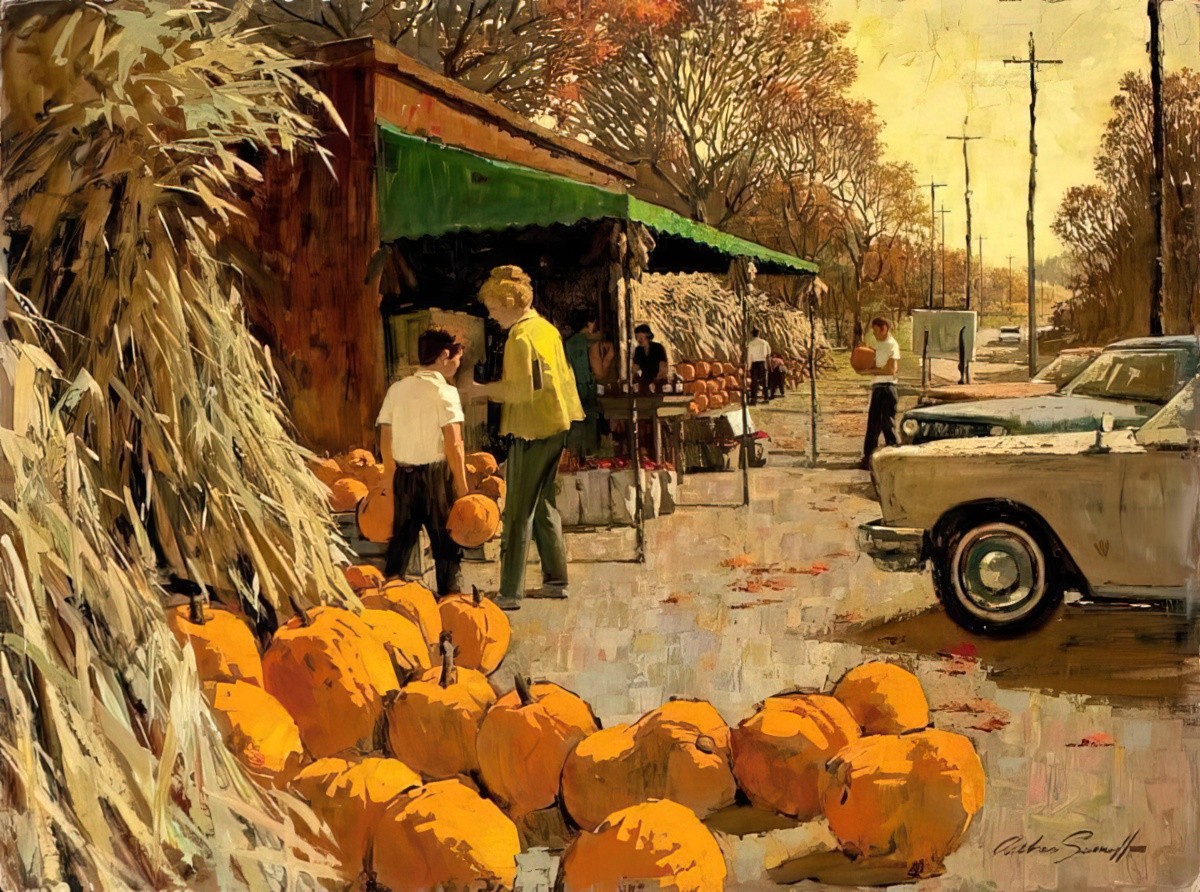
When an Australian ad agency was asked to create a series of commercials for Tooheys extra dry, they took the creepy, magical mythology of agricultural stacks and stooks and ran with it, resulting in the exhibition of creepiness below.
Moons and haystacks go together as a magical duo. Romance also comes into it, probably due to the bedlike softness of a bundle of hay (at least by the comfort standards of antiquity). However, the illustrator was clearly not a character specialist. The girl looks too young, and not especially happy to be there, adding a different layer of creepiness to this ‘romantic’ image.
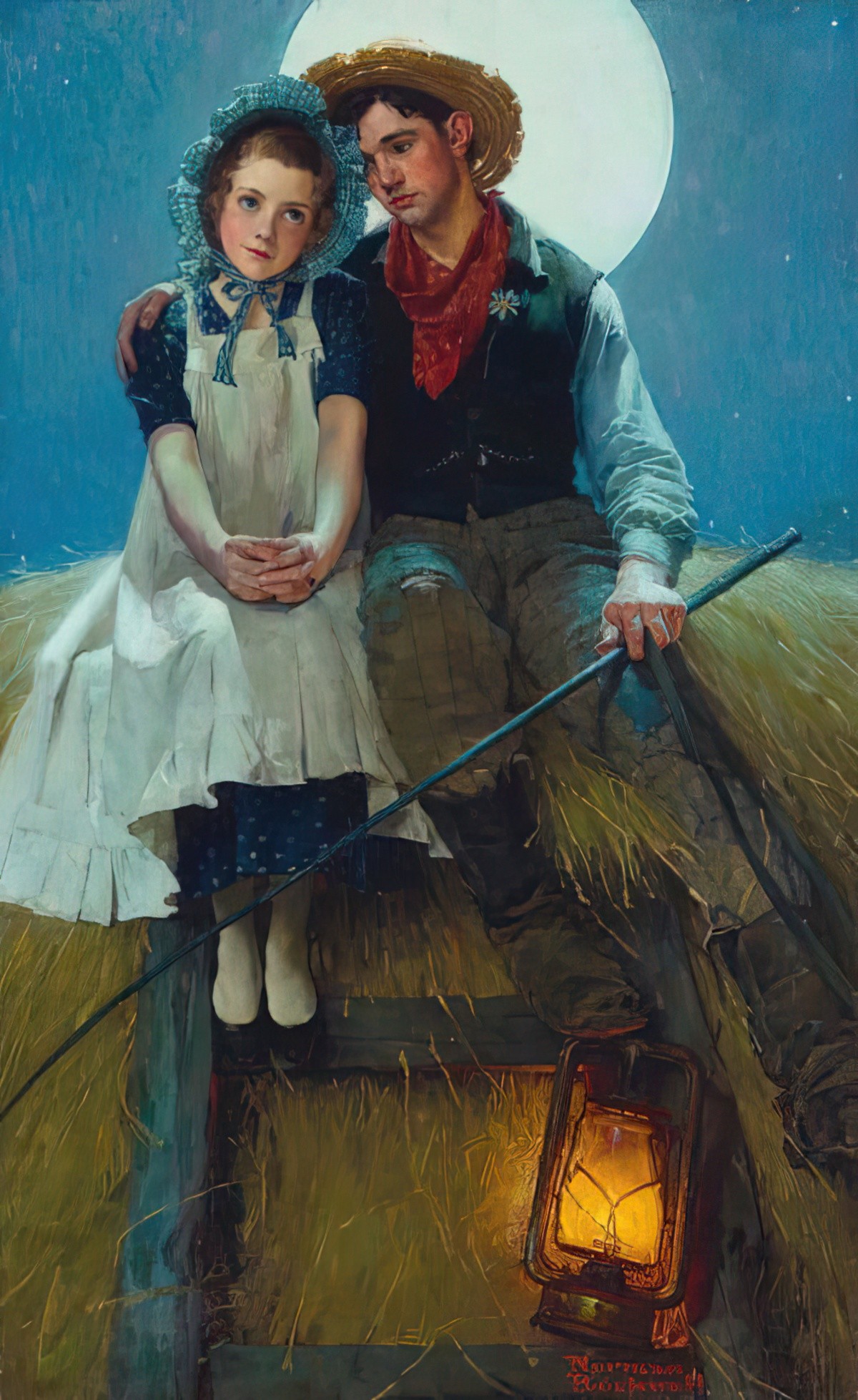
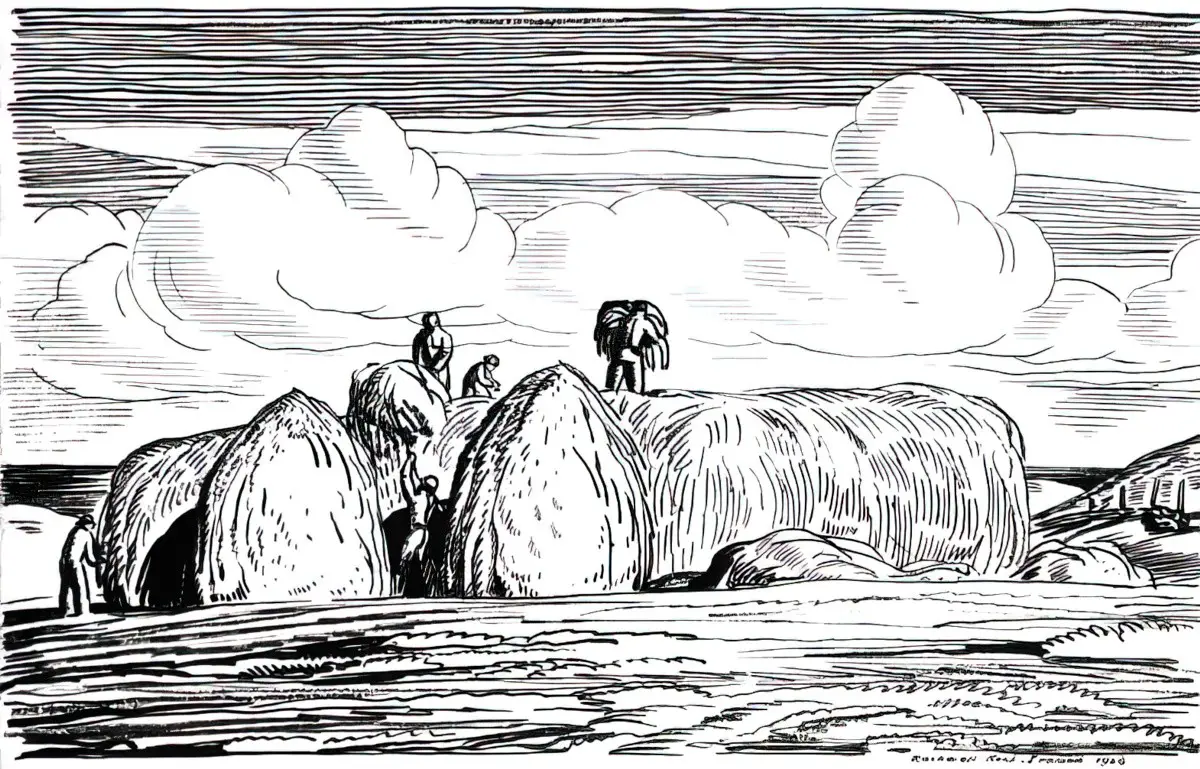
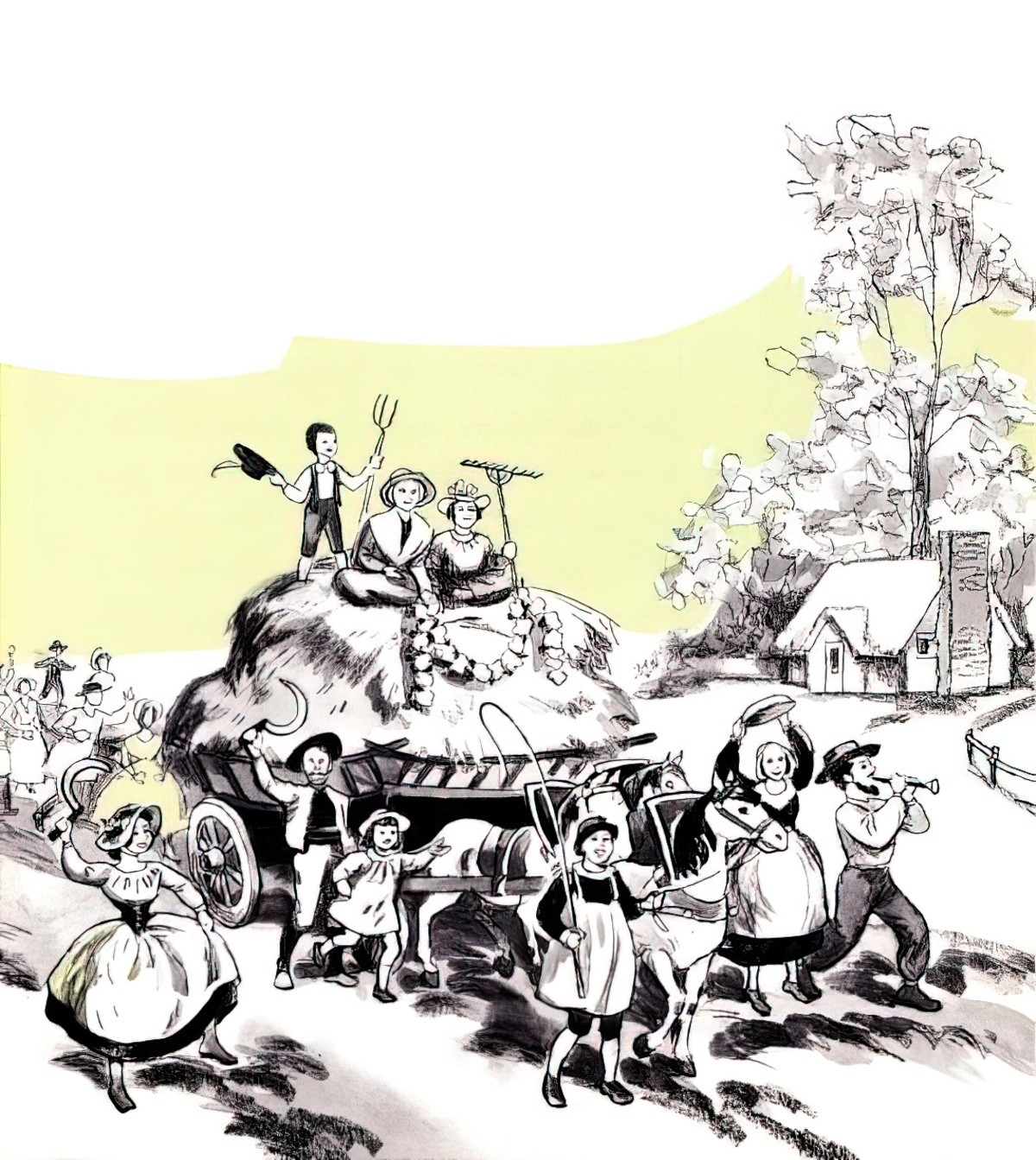
HAY AS COSY MATTRESS
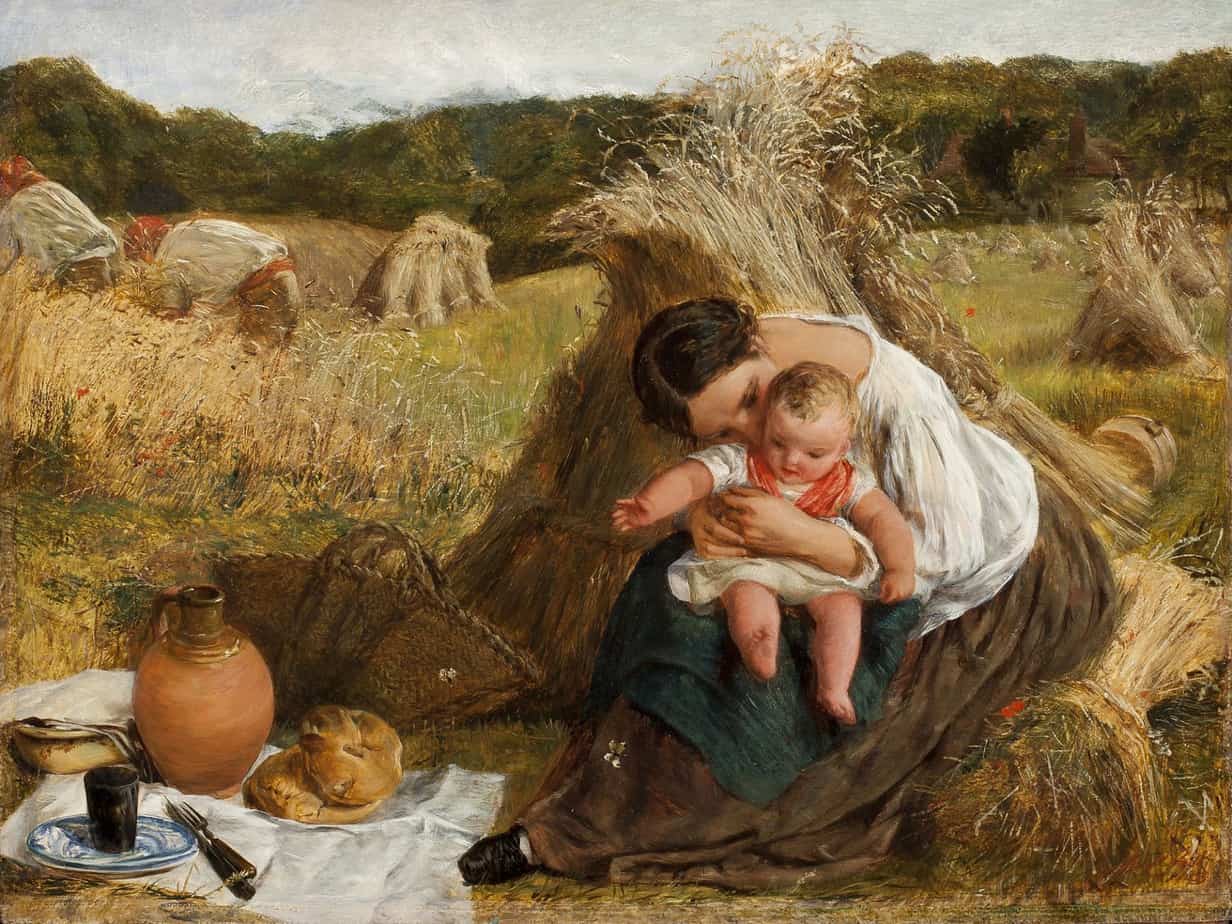
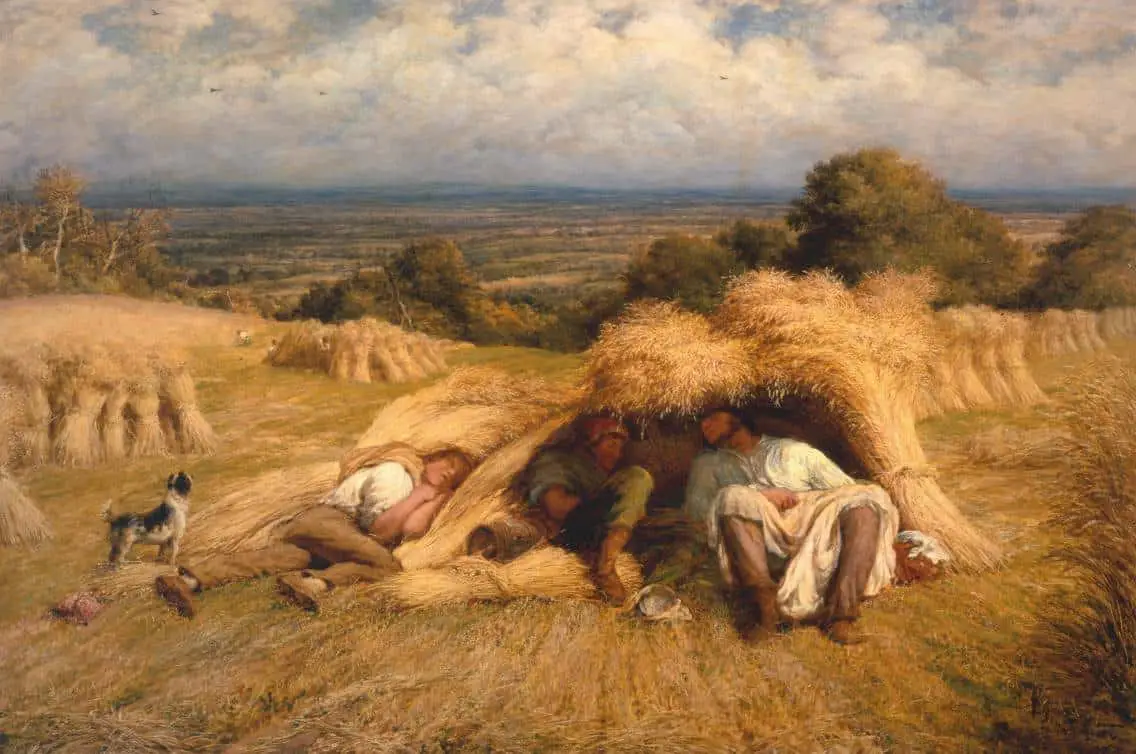
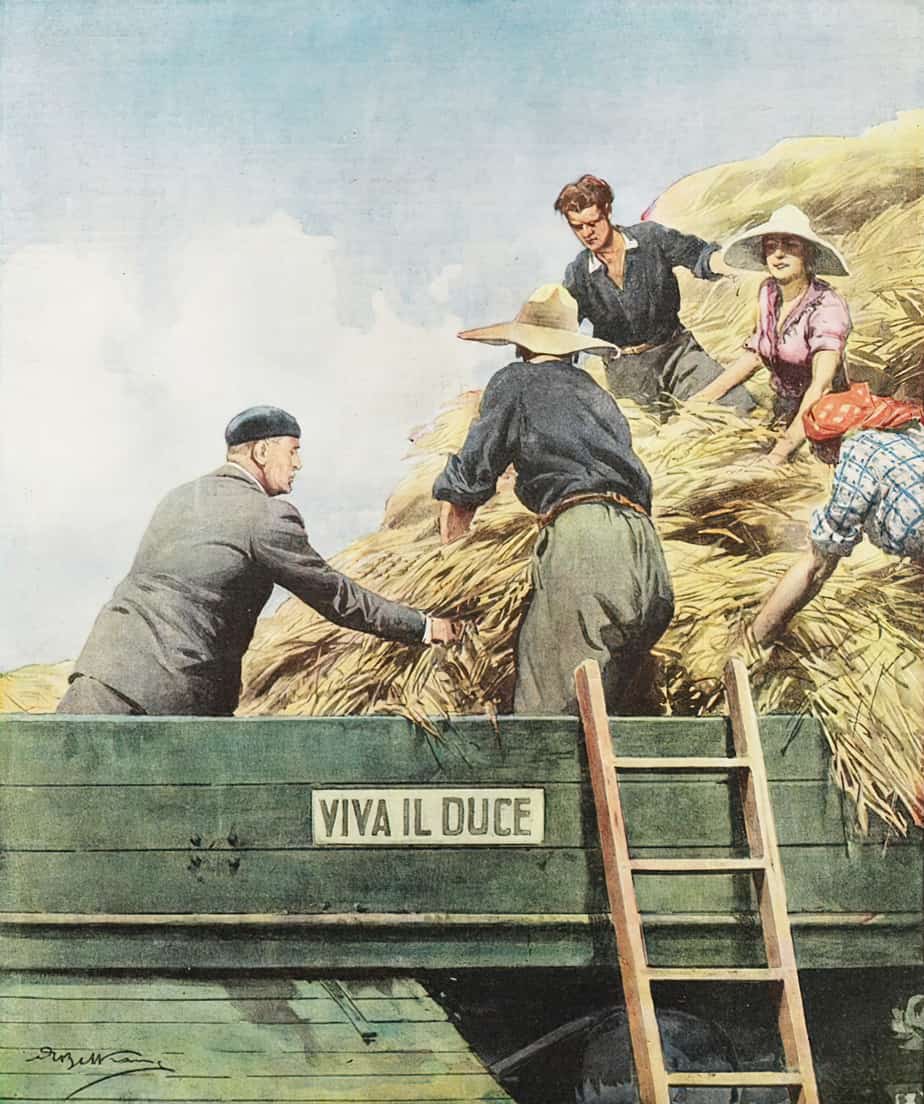
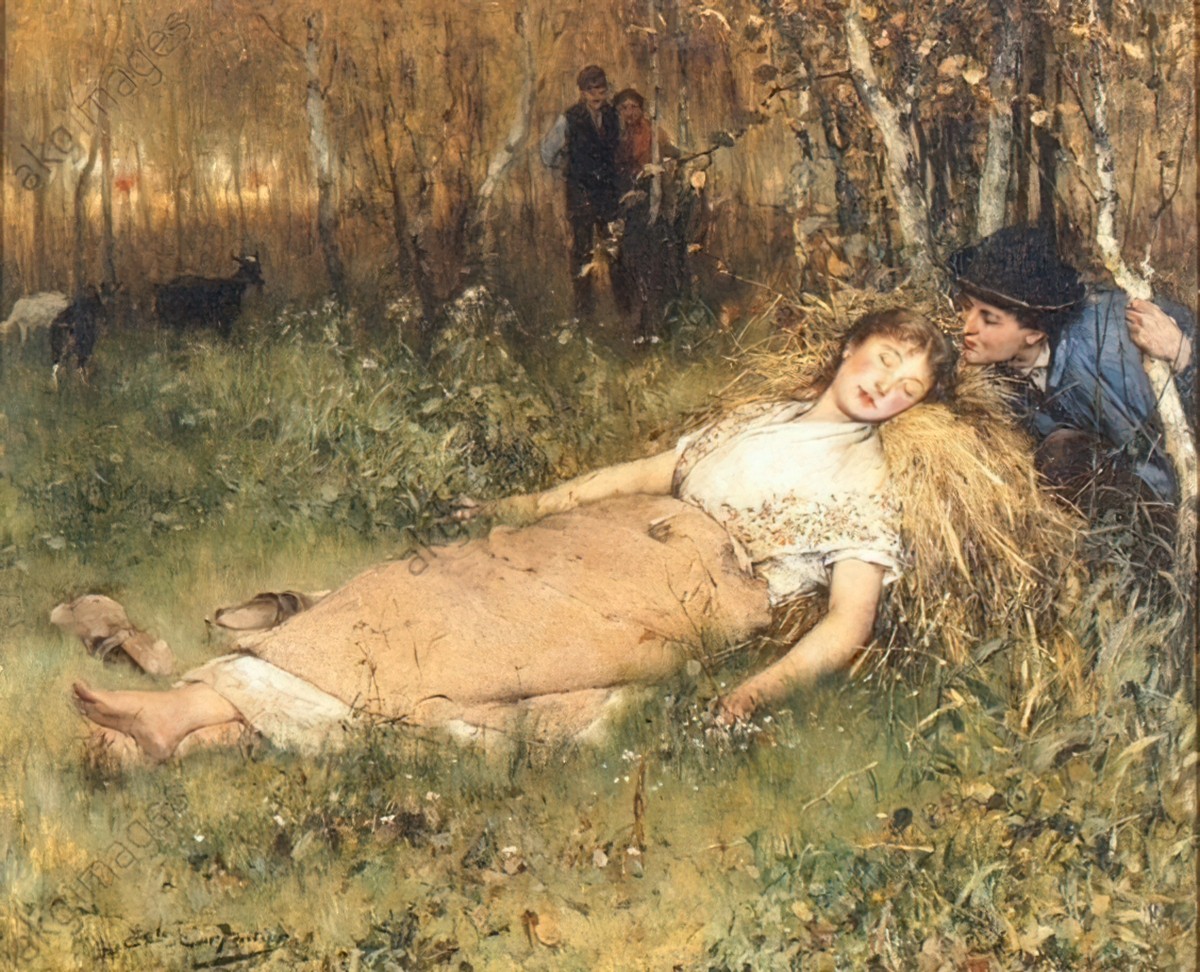
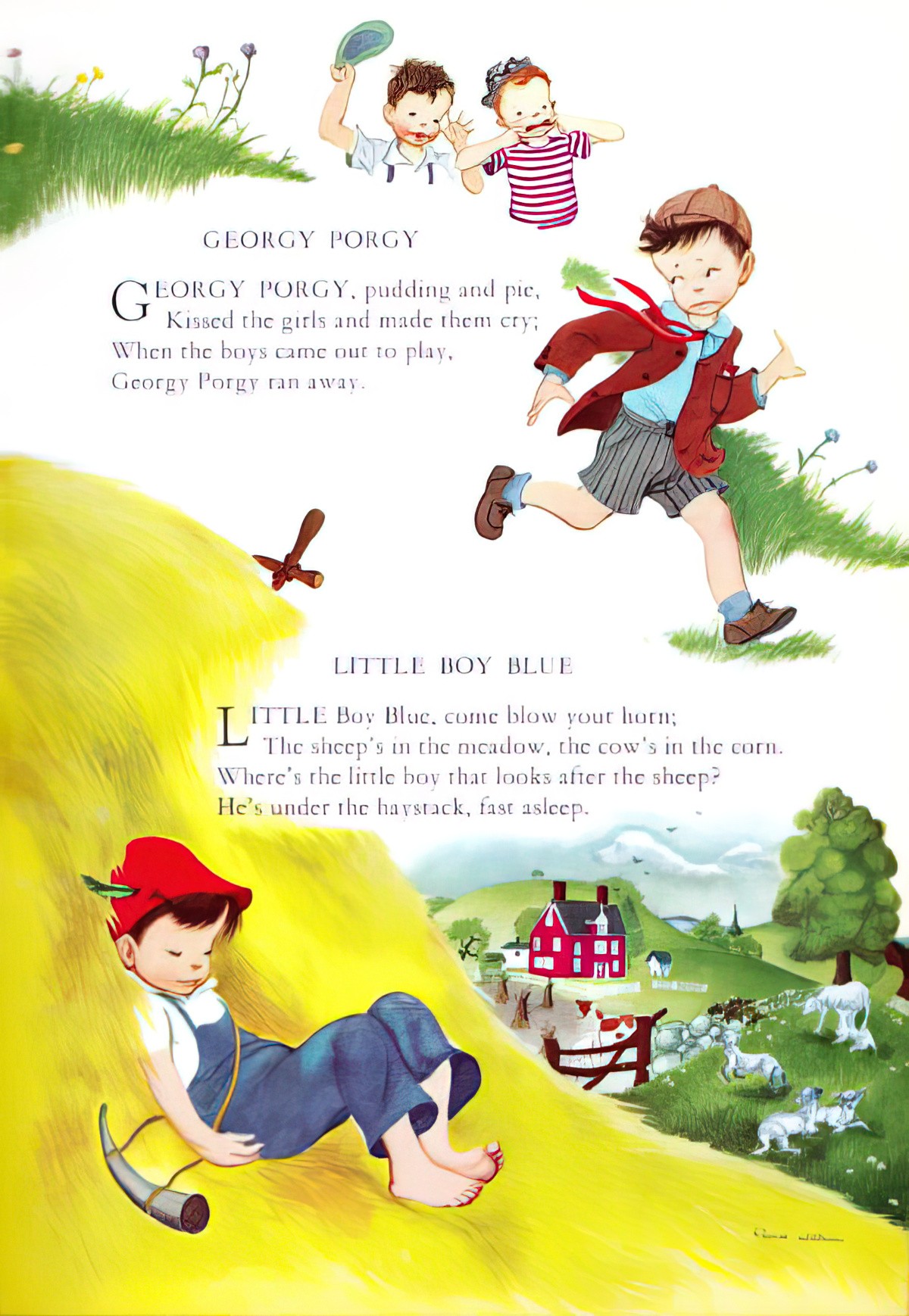
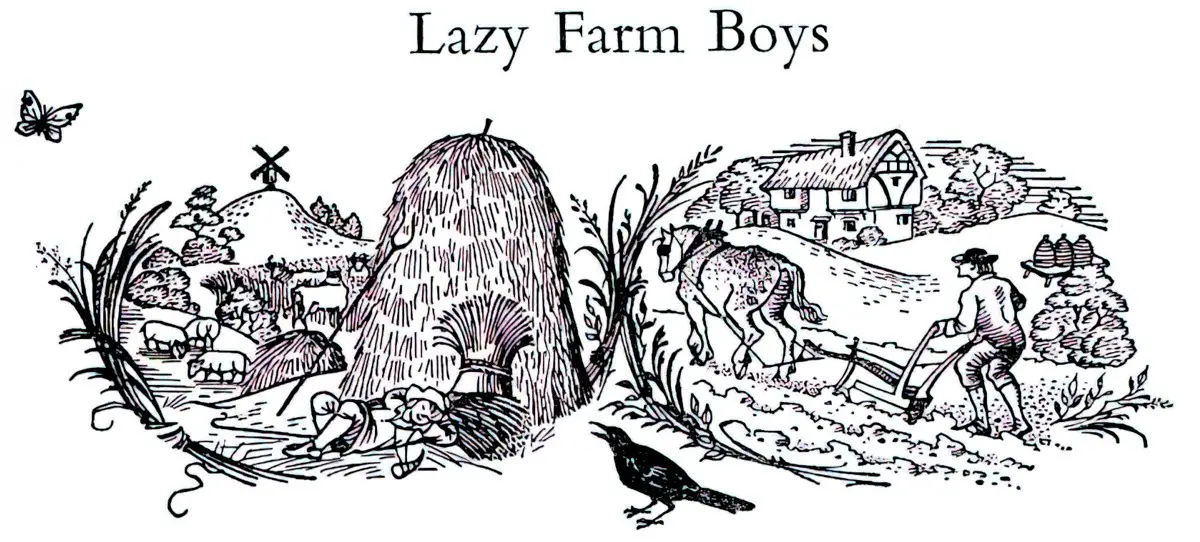
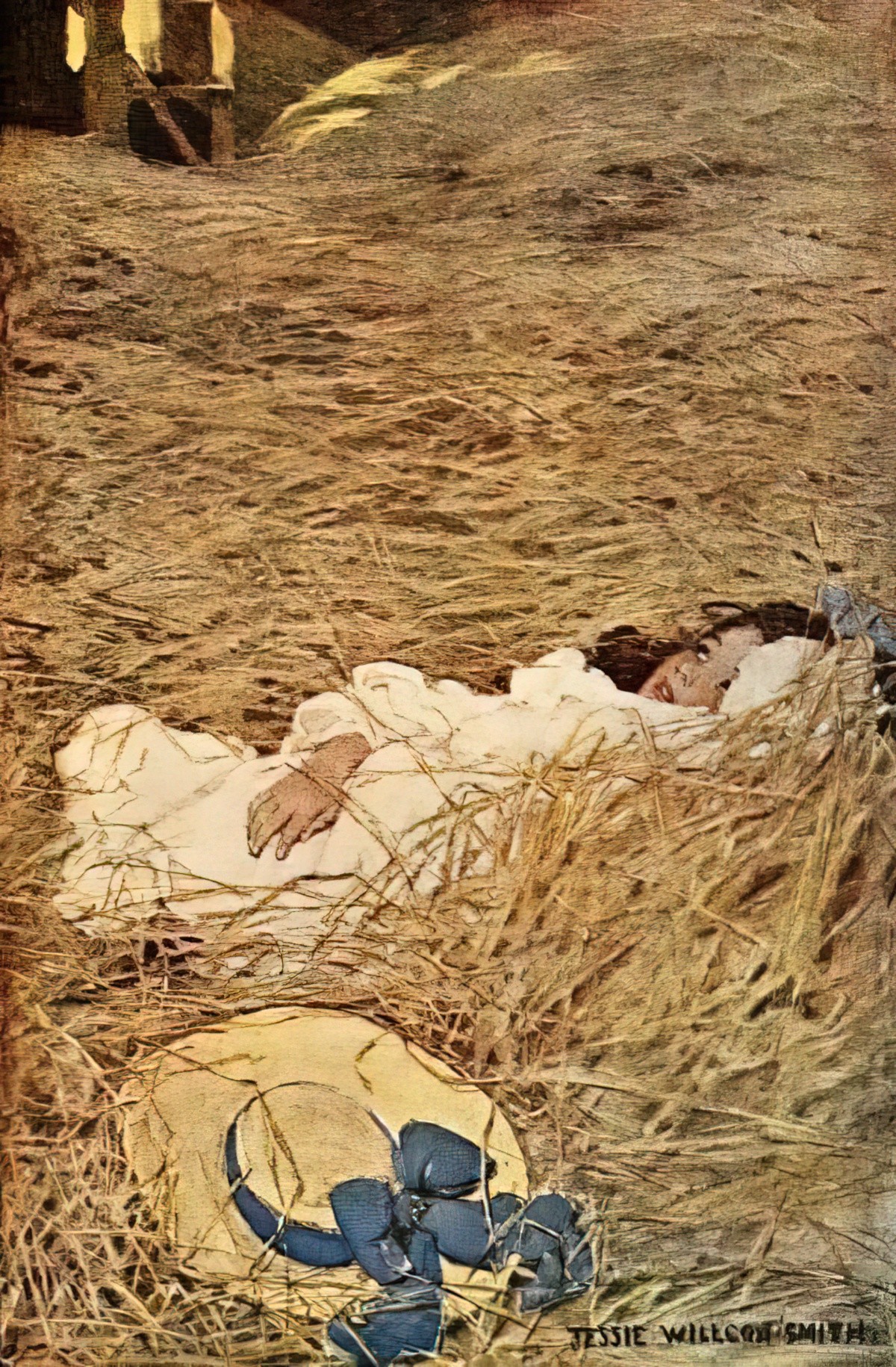
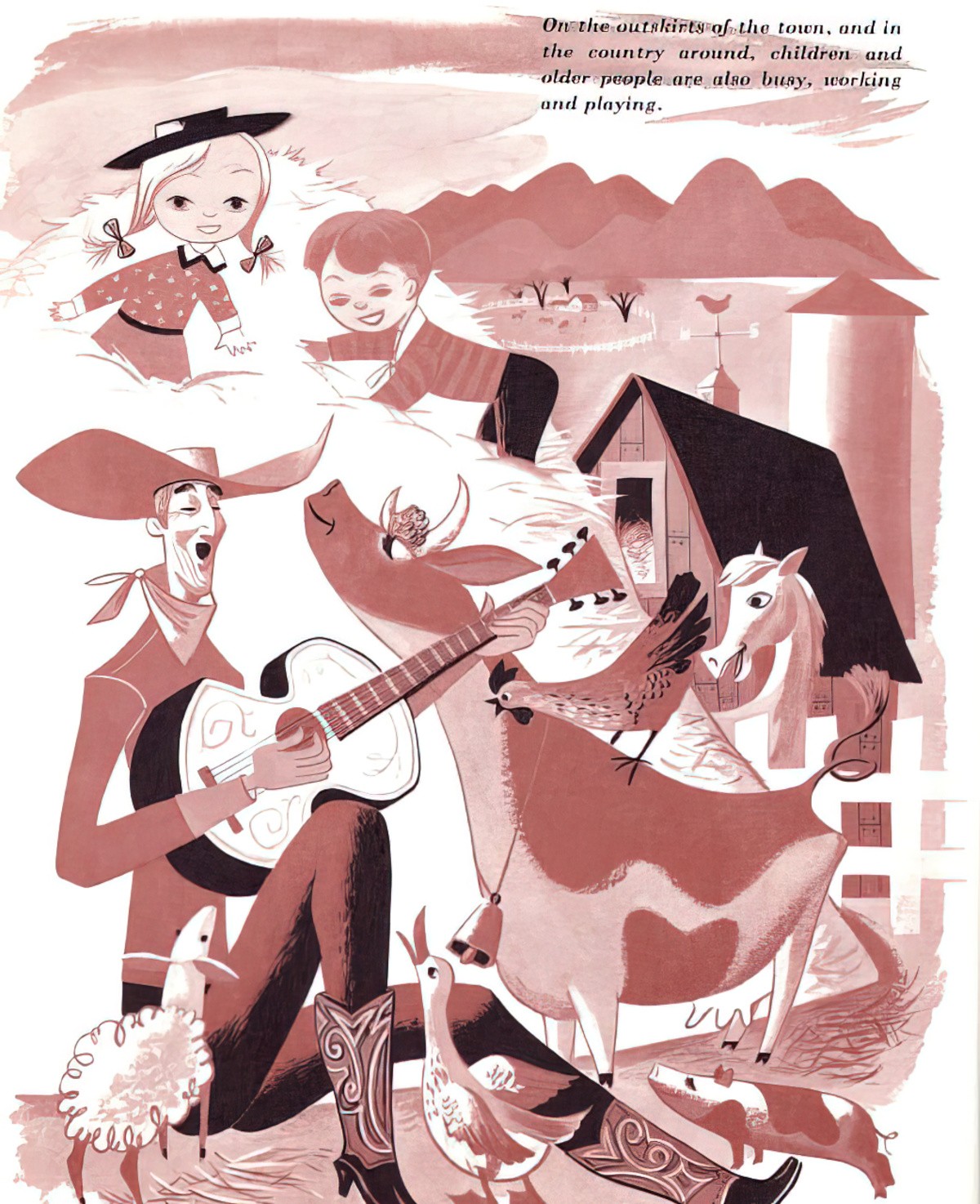
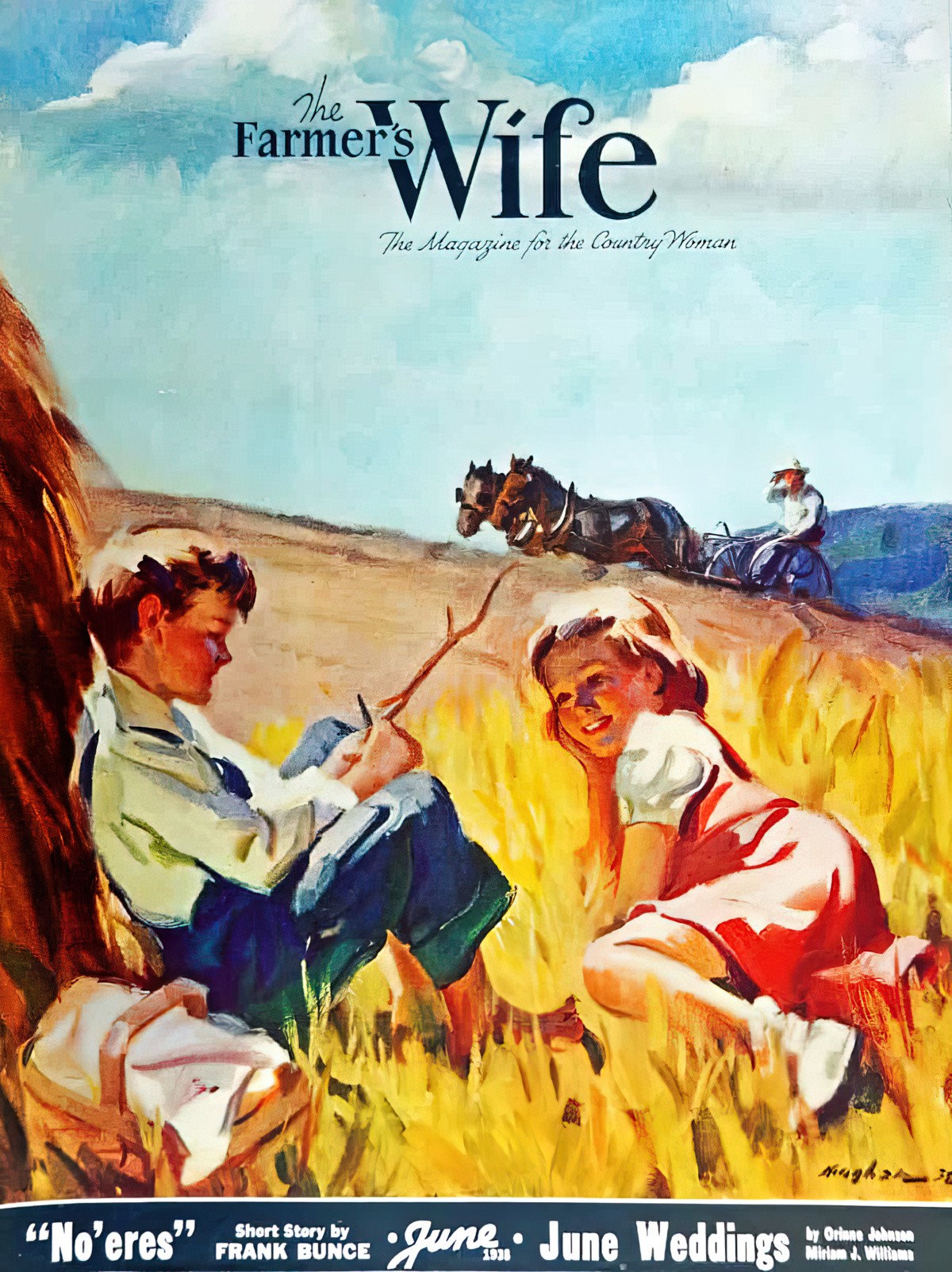
HAY AND THE LABYRINTH
Walking through fields of wheat can feel disorienting, like walking through a maze or labyrinth. In this case, hay catches some symbolism from the labyrinth, which is vast.
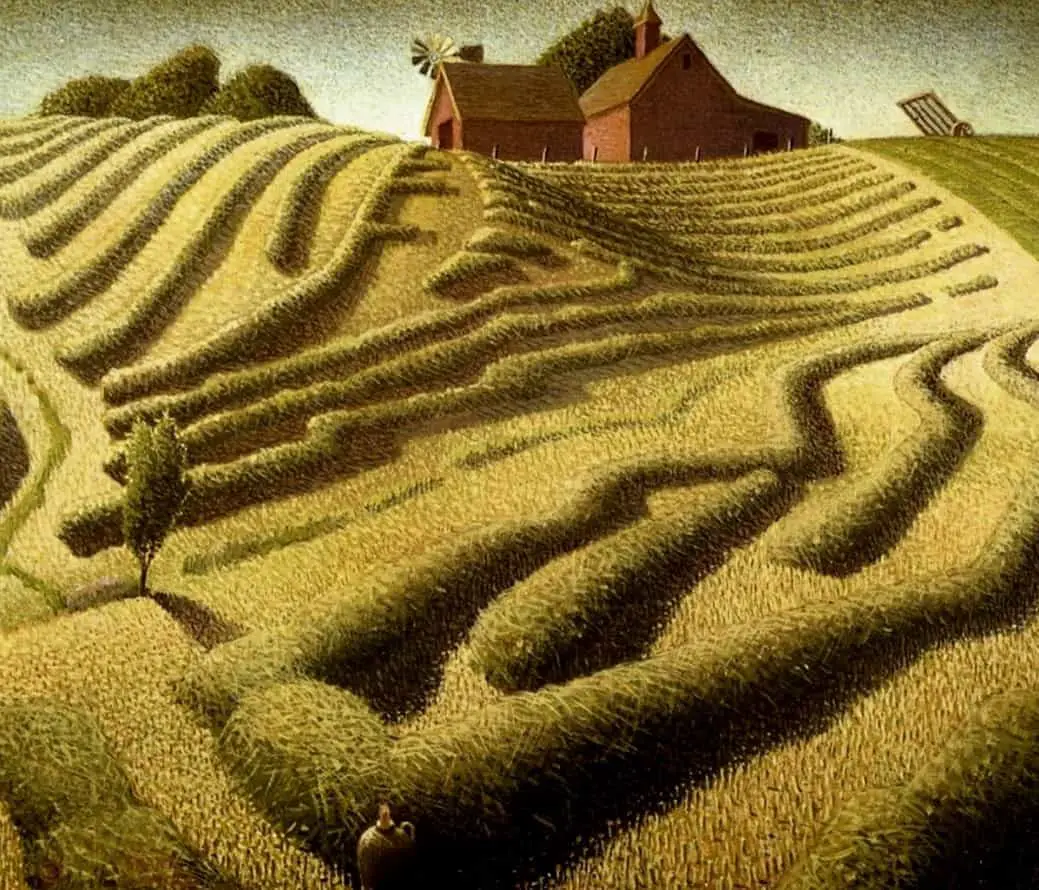
Header illustration: ‘Every trapdoor must have a lid and a railing’ Illustrator unknown, 1930s barn hay
